
Home » Tips for Teachers » 7 Research-Based Reasons Why Students Should Not Have Homework: Academic Insights, Opposing Perspectives & Alternatives

7 Research-Based Reasons Why Students Should Not Have Homework: Academic Insights, Opposing Perspectives & Alternatives
In recent years, the question of why students should not have homework has become a topic of intense debate among educators, parents, and students themselves. This discussion stems from a growing body of research that challenges the traditional view of homework as an essential component of academic success. The notion that homework is an integral part of learning is being reevaluated in light of new findings about its effectiveness and impact on students’ overall well-being.
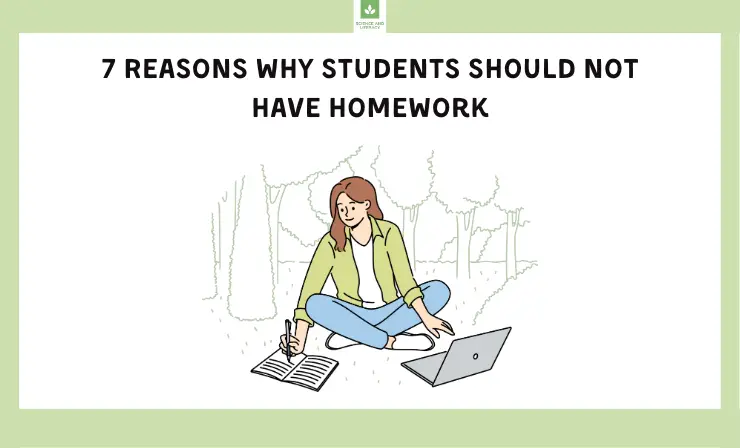
The push against homework is not just about the hours spent on completing assignments; it’s about rethinking the role of education in fostering the well-rounded development of young individuals. Critics argue that homework, particularly in excessive amounts, can lead to negative outcomes such as stress, burnout, and a diminished love for learning. Moreover, it often disproportionately affects students from disadvantaged backgrounds, exacerbating educational inequities. The debate also highlights the importance of allowing children to have enough free time for play, exploration, and family interaction, which are crucial for their social and emotional development.
Checking 13yo’s math homework & I have just one question. I can catch mistakes & help her correct. But what do kids do when their parent isn’t an Algebra teacher? Answer: They get frustrated. Quit. Get a bad grade. Think they aren’t good at math. How is homework fair??? — Jay Wamsted (@JayWamsted) March 24, 2022
As we delve into this discussion, we explore various facets of why reducing or even eliminating homework could be beneficial. We consider the research, weigh the pros and cons, and examine alternative approaches to traditional homework that can enhance learning without overburdening students.
Once you’ve finished this article, you’ll know:
- Insights from Teachers and Education Industry Experts →
- 7 Reasons Why Students Should Not Have Homework →
- Opposing Views on Homework Practices →
- Exploring Alternatives to Homework →
Insights from Teachers and Education Industry Experts: Diverse Perspectives on Homework
In the ongoing conversation about the role and impact of homework in education, the perspectives of those directly involved in the teaching process are invaluable. Teachers and education industry experts bring a wealth of experience and insights from the front lines of learning. Their viewpoints, shaped by years of interaction with students and a deep understanding of educational methodologies, offer a critical lens through which we can evaluate the effectiveness and necessity of homework in our current educational paradigm.
Check out this video featuring Courtney White, a high school language arts teacher who gained widespread attention for her explanation of why she chooses not to assign homework.
Here are the insights and opinions from various experts in the educational field on this topic:
“I teach 1st grade. I had parents ask for homework. I explained that I don’t give homework. Home time is family time. Time to play, cook, explore and spend time together. I do send books home, but there is no requirement or checklist for reading them. Read them, enjoy them, and return them when your child is ready for more. I explained that as a parent myself, I know they are busy—and what a waste of energy it is to sit and force their kids to do work at home—when they could use that time to form relationships and build a loving home. Something kids need more than a few math problems a week.” — Colleen S. , 1st grade teacher
“The lasting educational value of homework at that age is not proven. A kid says the times tables [at school] because he studied the times tables last night. But over a long period of time, a kid who is drilled on the times tables at school, rather than as homework, will also memorize their times tables. We are worried about young children and their social emotional learning. And that has to do with physical activity, it has to do with playing with peers, it has to do with family time. All of those are very important and can be removed by too much homework.” — David Bloomfield , education professor at Brooklyn College and the City University of New York graduate center
“Homework in primary school has an effect of around zero. In high school it’s larger. (…) Which is why we need to get it right. Not why we need to get rid of it. It’s one of those lower hanging fruit that we should be looking in our primary schools to say, ‘Is it really making a difference?’” — John Hattie , professor
”Many kids are working as many hours as their overscheduled parents and it is taking a toll – psychologically and in many other ways too. We see kids getting up hours before school starts just to get their homework done from the night before… While homework may give kids one more responsibility, it ignores the fact that kids do not need to grow up and become adults at ages 10 or 12. With schools cutting recess time or eliminating playgrounds, kids absorb every single stress there is, only on an even higher level. Their brains and bodies need time to be curious, have fun, be creative and just be a kid.” — Pat Wayman, teacher and CEO of HowtoLearn.com
7 Reasons Why Students Should Not Have Homework
Let’s delve into the reasons against assigning homework to students. Examining these arguments offers important perspectives on the wider educational and developmental consequences of homework practices.
1. Elevated Stress and Health Consequences
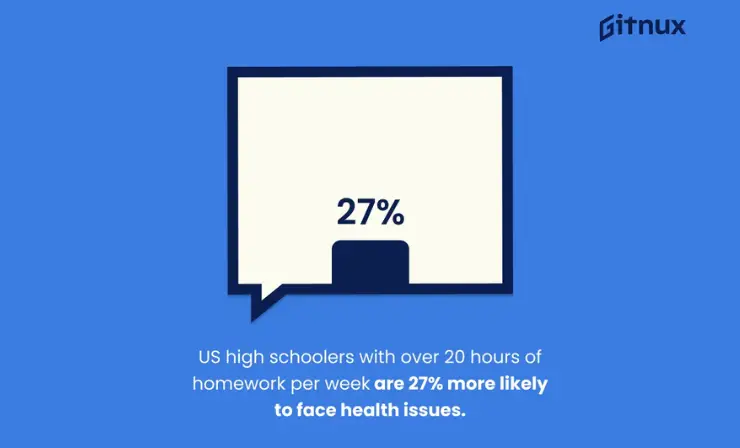
The ongoing debate about homework often focuses on its educational value, but a vital aspect that cannot be overlooked is the significant stress and health consequences it brings to students. In the context of American life, where approximately 70% of people report moderate or extreme stress due to various factors like mass shootings, healthcare affordability, discrimination, racism, sexual harassment, climate change, presidential elections, and the need to stay informed, the additional burden of homework further exacerbates this stress, particularly among students.
Key findings and statistics reveal a worrying trend:
- Overwhelming Student Stress: A staggering 72% of students report being often or always stressed over schoolwork, with a concerning 82% experiencing physical symptoms due to this stress.
- Serious Health Issues: Symptoms linked to homework stress include sleep deprivation, headaches, exhaustion, weight loss, and stomach problems.
- Sleep Deprivation: Despite the National Sleep Foundation recommending 8.5 to 9.25 hours of sleep for healthy adolescent development, students average just 6.80 hours of sleep on school nights. About 68% of students stated that schoolwork often or always prevented them from getting enough sleep, which is critical for their physical and mental health.
- Turning to Unhealthy Coping Mechanisms: Alarmingly, the pressure from excessive homework has led some students to turn to alcohol and drugs as a way to cope with stress.
This data paints a concerning picture. Students, already navigating a world filled with various stressors, find themselves further burdened by homework demands. The direct correlation between excessive homework and health issues indicates a need for reevaluation. The goal should be to ensure that homework if assigned, adds value to students’ learning experiences without compromising their health and well-being.
By addressing the issue of homework-related stress and health consequences, we can take a significant step toward creating a more nurturing and effective educational environment. This environment would not only prioritize academic achievement but also the overall well-being and happiness of students, preparing them for a balanced and healthy life both inside and outside the classroom.
2. Inequitable Impact and Socioeconomic Disparities
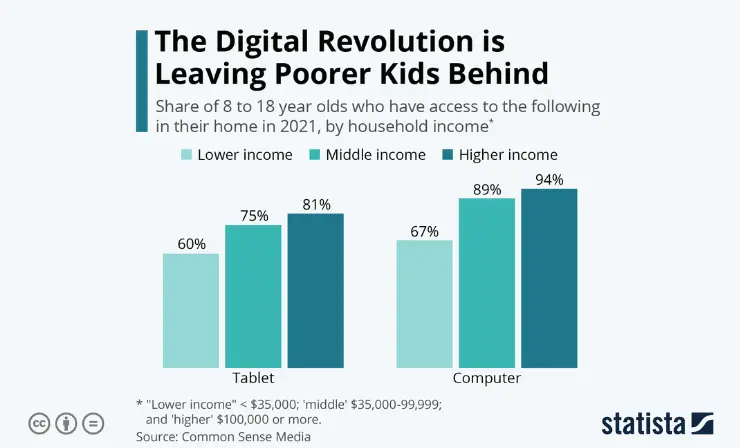
In the discourse surrounding educational equity, homework emerges as a factor exacerbating socioeconomic disparities, particularly affecting students from lower-income families and those with less supportive home environments. While homework is often justified as a means to raise academic standards and promote equity, its real-world impact tells a different story.
The inequitable burden of homework becomes starkly evident when considering the resources required to complete it, especially in the digital age. Homework today often necessitates a computer and internet access – resources not readily available to all students. This digital divide significantly disadvantages students from lower-income backgrounds, deepening the chasm between them and their more affluent peers.
Key points highlighting the disparities:
- Digital Inequity: Many students lack access to necessary technology for homework, with low-income families disproportionately affected.
- Impact of COVID-19: The pandemic exacerbated these disparities as education shifted online, revealing the extent of the digital divide.
- Educational Outcomes Tied to Income: A critical indicator of college success is linked more to family income levels than to rigorous academic preparation. Research indicates that while 77% of students from high-income families graduate from highly competitive colleges, only 9% from low-income families achieve the same . This disparity suggests that the pressure of heavy homework loads, rather than leveling the playing field, may actually hinder the chances of success for less affluent students.
Moreover, the approach to homework varies significantly across different types of schools. While some rigorous private and preparatory schools in both marginalized and affluent communities assign extreme levels of homework, many progressive schools focusing on holistic learning and self-actualization opt for no homework, yet achieve similar levels of college and career success. This contrast raises questions about the efficacy and necessity of heavy homework loads in achieving educational outcomes.
The issue of homework and its inequitable impact is not just an academic concern; it is a reflection of broader societal inequalities. By continuing practices that disproportionately burden students from less privileged backgrounds, the educational system inadvertently perpetuates the very disparities it seeks to overcome.
3. Negative Impact on Family Dynamics
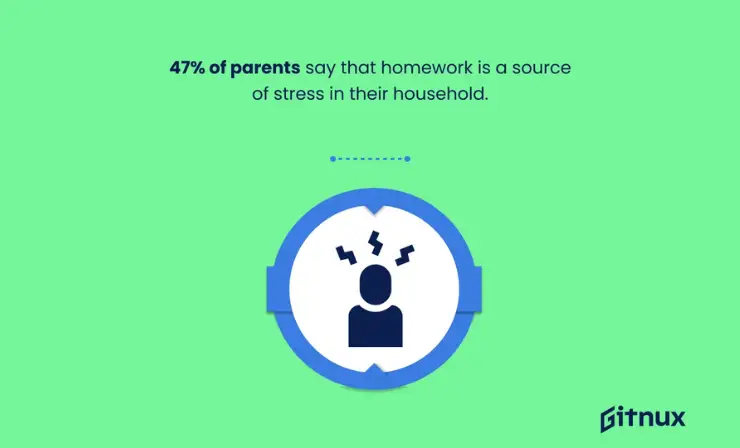
Homework, a staple of the educational system, is often perceived as a necessary tool for academic reinforcement. However, its impact extends beyond the realm of academics, significantly affecting family dynamics. The negative repercussions of homework on the home environment have become increasingly evident, revealing a troubling pattern that can lead to conflict, mental health issues, and domestic friction.
A study conducted in 2015 involving 1,100 parents sheds light on the strain homework places on family relationships. The findings are telling:
- Increased Likelihood of Conflicts: Families where parents did not have a college degree were 200% more likely to experience fights over homework.
- Misinterpretations and Misunderstandings: Parents often misinterpret their children’s difficulties with homework as a lack of attention in school, leading to feelings of frustration and mistrust on both sides.
- Discriminatory Impact: The research concluded that the current approach to homework disproportionately affects children whose parents have lower educational backgrounds, speak English as a second language, or belong to lower-income groups.
The issue is not confined to specific demographics but is a widespread concern. Samantha Hulsman, a teacher featured in Education Week Teacher , shared her personal experience with the toll that homework can take on family time. She observed that a seemingly simple 30-minute assignment could escalate into a three-hour ordeal, causing stress and strife between parents and children. Hulsman’s insights challenge the traditional mindset about homework, highlighting a shift towards the need for skills such as collaboration and problem-solving over rote memorization of facts.
The need of the hour is to reassess the role and amount of homework assigned to students. It’s imperative to find a balance that facilitates learning and growth without compromising the well-being of the family unit. Such a reassessment would not only aid in reducing domestic conflicts but also contribute to a more supportive and nurturing environment for children’s overall development.
4. Consumption of Free Time
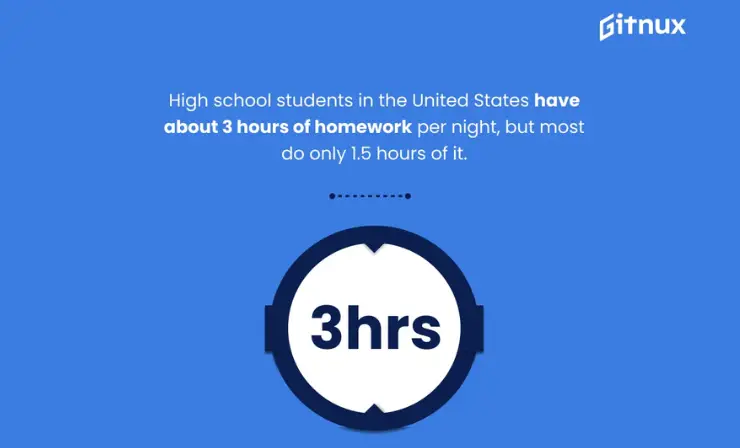
In recent years, a growing chorus of voices has raised concerns about the excessive burden of homework on students, emphasizing how it consumes their free time and impedes their overall well-being. The issue is not just the quantity of homework, but its encroachment on time that could be used for personal growth, relaxation, and family bonding.
Authors Sara Bennett and Nancy Kalish , in their book “The Case Against Homework,” offer an insightful window into the lives of families grappling with the demands of excessive homework. They share stories from numerous interviews conducted in the mid-2000s, highlighting the universal struggle faced by families across different demographics. A poignant account from a parent in Menlo Park, California, describes nightly sessions extending until 11 p.m., filled with stress and frustration, leading to a soured attitude towards school in both the child and the parent. This narrative is not isolated, as about one-third of the families interviewed expressed feeling crushed by the overwhelming workload.
Key points of concern:
- Excessive Time Commitment: Students, on average, spend over 6 hours in school each day, and homework adds significantly to this time, leaving little room for other activities.
- Impact on Extracurricular Activities: Homework infringes upon time for sports, music, art, and other enriching experiences, which are as crucial as academic courses.
- Stifling Creativity and Self-Discovery: The constant pressure of homework limits opportunities for students to explore their interests and learn new skills independently.
The National Education Association (NEA) and the National PTA (NPTA) recommend a “10 minutes of homework per grade level” standard, suggesting a more balanced approach. However, the reality often far exceeds this guideline, particularly for older students. The impact of this overreach is profound, affecting not just academic performance but also students’ attitudes toward school, their self-confidence, social skills, and overall quality of life.
Furthermore, the intense homework routine’s effectiveness is doubtful, as it can overwhelm students and detract from the joy of learning. Effective learning builds on prior knowledge in an engaging way, but excessive homework in a home setting may be irrelevant and uninteresting. The key challenge is balancing homework to enhance learning without overburdening students, allowing time for holistic growth and activities beyond academics. It’s crucial to reassess homework policies to support well-rounded development.
5. Challenges for Students with Learning Disabilities
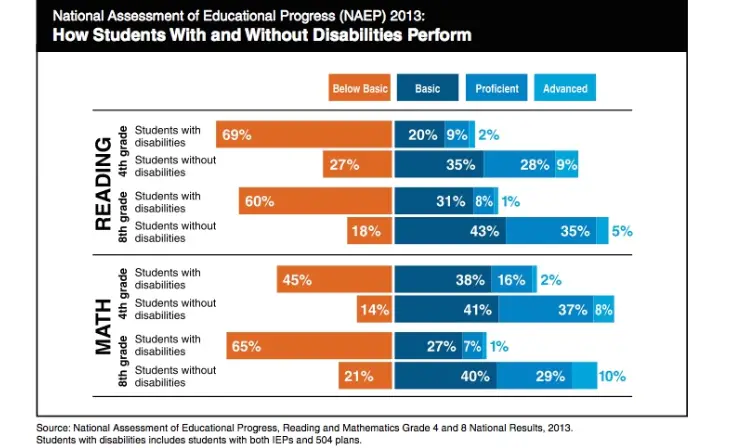
Homework, a standard educational tool, poses unique challenges for students with learning disabilities, often leading to a frustrating and disheartening experience. These challenges go beyond the typical struggles faced by most students and can significantly impede their educational progress and emotional well-being.
Child psychologist Kenneth Barish’s insights in Psychology Today shed light on the complex relationship between homework and students with learning disabilities:
- Homework as a Painful Endeavor: For students with learning disabilities, completing homework can be likened to “running with a sprained ankle.” It’s a task that, while doable, is fraught with difficulty and discomfort.
- Misconceptions about Laziness: Often, children who struggle with homework are perceived as lazy. However, Barish emphasizes that these students are more likely to be frustrated, discouraged, or anxious rather than unmotivated.
- Limited Improvement in School Performance: The battles over homework rarely translate into significant improvement in school for these children, challenging the conventional notion of homework as universally beneficial.
These points highlight the need for a tailored approach to homework for students with learning disabilities. It’s crucial to recognize that the traditional homework model may not be the most effective or appropriate method for facilitating their learning. Instead, alternative strategies that accommodate their unique needs and learning styles should be considered.
In conclusion, the conventional homework paradigm needs reevaluation, particularly concerning students with learning disabilities. By understanding and addressing their unique challenges, educators can create a more inclusive and supportive educational environment. This approach not only aids in their academic growth but also nurtures their confidence and overall development, ensuring that they receive an equitable and empathetic educational experience.
6. Critique of Underlying Assumptions about Learning
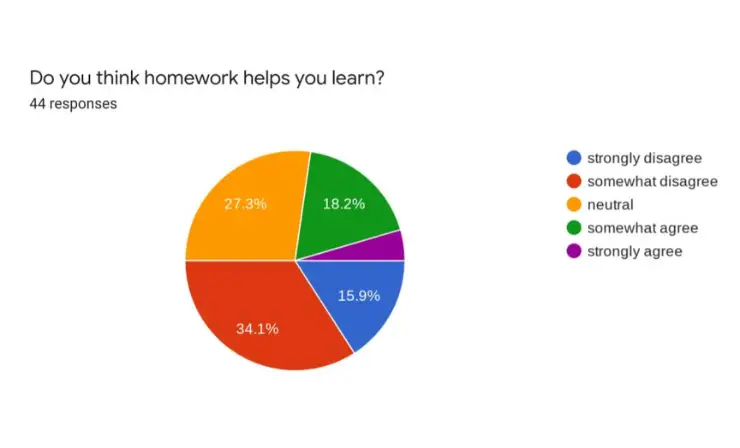
The longstanding belief in the educational sphere that more homework automatically translates to more learning is increasingly being challenged. Critics argue that this assumption is not only flawed but also unsupported by solid evidence, questioning the efficacy of homework as an effective learning tool.
Alfie Kohn , a prominent critic of homework, aptly compares students to vending machines in this context, suggesting that the expectation of inserting an assignment and automatically getting out of learning is misguided. Kohn goes further, labeling homework as the “greatest single extinguisher of children’s curiosity.” This critique highlights a fundamental issue: the potential of homework to stifle the natural inquisitiveness and love for learning in children.
The lack of concrete evidence supporting the effectiveness of homework is evident in various studies:
- Marginal Effectiveness of Homework: A study involving 28,051 high school seniors found that the effectiveness of homework was marginal, and in some cases, it was counterproductive, leading to more academic problems than solutions.
- No Correlation with Academic Achievement: Research in “ National Differences, Global Similarities ” showed no correlation between homework and academic achievement in elementary students, and any positive correlation in middle or high school diminished with increasing homework loads.
- Increased Academic Pressure: The Teachers College Record published findings that homework adds to academic pressure and societal stress, exacerbating performance gaps between students from different socioeconomic backgrounds.
These findings bring to light several critical points:
- Quality Over Quantity: According to a recent article in Monitor on Psychology , experts concur that the quality of homework assignments, along with the quality of instruction, student motivation, and inherent ability, is more crucial for academic success than the quantity of homework.
- Counterproductive Nature of Excessive Homework: Excessive homework can lead to more academic challenges, particularly for students already facing pressures from other aspects of their lives.
- Societal Stress and Performance Gaps: Homework can intensify societal stress and widen the academic performance divide.
The emerging consensus from these studies suggests that the traditional approach to homework needs rethinking. Rather than focusing on the quantity of assignments, educators should consider the quality and relevance of homework, ensuring it truly contributes to learning and development. This reassessment is crucial for fostering an educational environment that nurtures curiosity and a love for learning, rather than extinguishing it.
7. Issues with Homework Enforcement, Reliability, and Temptation to Cheat
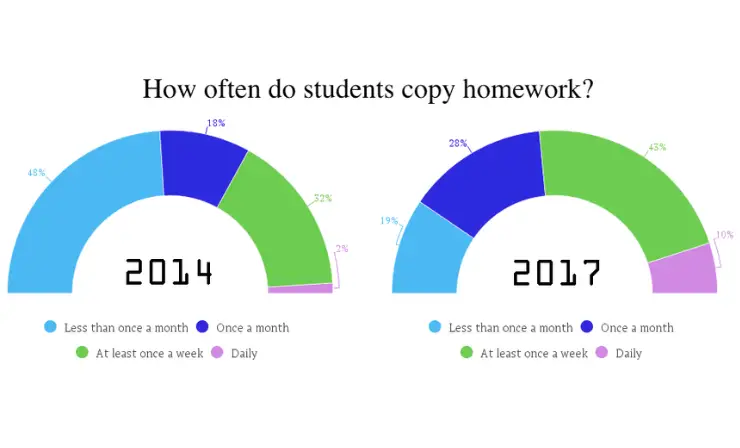
In the academic realm, the enforcement of homework is a subject of ongoing debate, primarily due to its implications on student integrity and the true value of assignments. The challenges associated with homework enforcement often lead to unintended yet significant issues, such as cheating, copying, and a general undermining of educational values.
Key points highlighting enforcement challenges:
- Difficulty in Enforcing Completion: Ensuring that students complete their homework can be a complex task, and not completing homework does not always correlate with poor grades.
- Reliability of Homework Practice: The reliability of homework as a practice tool is undermined when students, either out of desperation or lack of understanding, choose shortcuts over genuine learning. This approach can lead to the opposite of the intended effect, especially when assignments are not well-aligned with the students’ learning levels or interests.
- Temptation to Cheat: The issue of cheating is particularly troubling. According to a report by The Chronicle of Higher Education , under the pressure of at-home assignments, many students turn to copying others’ work, plagiarizing, or using creative technological “hacks.” This tendency not only questions the integrity of the learning process but also reflects the extreme stress that homework can induce.
- Parental Involvement in Completion: As noted in The American Journal of Family Therapy , this raises concerns about the authenticity of the work submitted. When parents complete assignments for their children, it not only deprives the students of the opportunity to learn but also distorts the purpose of homework as a learning aid.
In conclusion, the challenges of homework enforcement present a complex problem that requires careful consideration. The focus should shift towards creating meaningful, manageable, and quality-driven assignments that encourage genuine learning and integrity, rather than overwhelming students and prompting counterproductive behaviors.
Addressing Opposing Views on Homework Practices
While opinions on homework policies are diverse, understanding different viewpoints is crucial. In the following sections, we will examine common arguments supporting homework assignments, along with counterarguments that offer alternative perspectives on this educational practice.
1. Improvement of Academic Performance

Homework is commonly perceived as a means to enhance academic performance, with the belief that it directly contributes to better grades and test scores. This view posits that through homework, students reinforce what they learn in class, leading to improved understanding and retention, which ultimately translates into higher academic achievement.
However, the question of why students should not have homework becomes pertinent when considering the complex relationship between homework and academic performance. Studies have indicated that excessive homework doesn’t necessarily equate to higher grades or test scores. Instead, too much homework can backfire, leading to stress and fatigue that adversely affect a student’s performance. Reuters highlights an intriguing correlation suggesting that physical activity may be more conducive to academic success than additional homework, underscoring the importance of a holistic approach to education that prioritizes both physical and mental well-being for enhanced academic outcomes.
2. Reinforcement of Learning
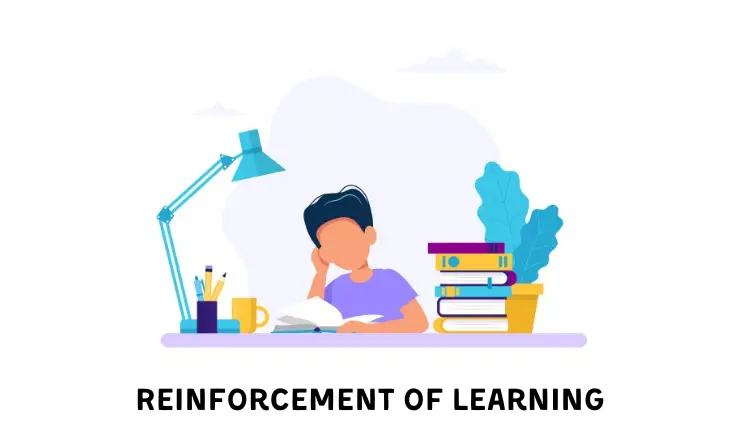
Homework is traditionally viewed as a tool to reinforce classroom learning, enabling students to practice and retain material. However, research suggests its effectiveness is ambiguous. In instances where homework is well-aligned with students’ abilities and classroom teachings, it can indeed be beneficial. Particularly for younger students , excessive homework can cause burnout and a loss of interest in learning, counteracting its intended purpose.
Furthermore, when homework surpasses a student’s capability, it may induce frustration and confusion rather than aid in learning. This challenges the notion that more homework invariably leads to better understanding and retention of educational content.
3. Development of Time Management Skills

Homework is often considered a crucial tool in helping students develop important life skills such as time management and organization. The idea is that by regularly completing assignments, students learn to allocate their time efficiently and organize their tasks effectively, skills that are invaluable in both academic and personal life.
However, the impact of homework on developing these skills is not always positive. For younger students, especially, an overwhelming amount of homework can be more of a hindrance than a help. Instead of fostering time management and organizational skills, an excessive workload often leads to stress and anxiety . These negative effects can impede the learning process and make it difficult for students to manage their time and tasks effectively, contradicting the original purpose of homework.
4. Preparation for Future Academic Challenges

Homework is often touted as a preparatory tool for future academic challenges that students will encounter in higher education and their professional lives. The argument is that by tackling homework, students build a foundation of knowledge and skills necessary for success in more advanced studies and in the workforce, fostering a sense of readiness and confidence.
Contrarily, an excessive homework load, especially from a young age, can have the opposite effect . It can instill a negative attitude towards education, dampening students’ enthusiasm and willingness to embrace future academic challenges. Overburdening students with homework risks disengagement and loss of interest, thereby defeating the purpose of preparing them for future challenges. Striking a balance in the amount and complexity of homework is crucial to maintaining student engagement and fostering a positive attitude towards ongoing learning.
5. Parental Involvement in Education
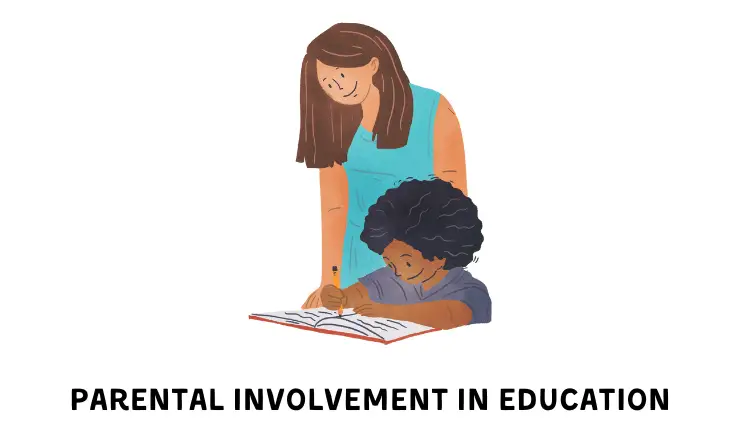
Homework often acts as a vital link connecting parents to their child’s educational journey, offering insights into the school’s curriculum and their child’s learning process. This involvement is key in fostering a supportive home environment and encouraging a collaborative relationship between parents and the school. When parents understand and engage with what their children are learning, it can significantly enhance the educational experience for the child.
However, the line between involvement and over-involvement is thin. When parents excessively intervene by completing their child’s homework, it can have adverse effects . Such actions not only diminish the educational value of homework but also rob children of the opportunity to develop problem-solving skills and independence. This over-involvement, coupled with disparities in parental ability to assist due to variations in time, knowledge, or resources, may lead to unequal educational outcomes, underlining the importance of a balanced approach to parental participation in homework.
Exploring Alternatives to Homework and Finding a Middle Ground

In the ongoing debate about the role of homework in education, it’s essential to consider viable alternatives and strategies to minimize its burden. While completely eliminating homework may not be feasible for all educators, there are several effective methods to reduce its impact and offer more engaging, student-friendly approaches to learning.
Alternatives to Traditional Homework
- Project-Based Learning: This method focuses on hands-on, long-term projects where students explore real-world problems. It encourages creativity, critical thinking, and collaborative skills, offering a more engaging and practical learning experience than traditional homework. For creative ideas on school projects, especially related to the solar system, be sure to explore our dedicated article on solar system projects .
- Flipped Classrooms: Here, students are introduced to new content through videos or reading materials at home and then use class time for interactive activities. This approach allows for more personalized and active learning during school hours.
- Reading for Pleasure: Encouraging students to read books of their choice can foster a love for reading and improve literacy skills without the pressure of traditional homework assignments. This approach is exemplified by Marion County, Florida , where public schools implemented a no-homework policy for elementary students. Instead, they are encouraged to read nightly for 20 minutes . Superintendent Heidi Maier’s decision was influenced by research showing that while homework offers minimal benefit to young students, regular reading significantly boosts their learning. For book recommendations tailored to middle school students, take a look at our specially curated article .
Ideas for Minimizing Homework
- Limiting Homework Quantity: Adhering to guidelines like the “ 10-minute rule ” (10 minutes of homework per grade level per night) can help ensure that homework does not become overwhelming.
- Quality Over Quantity: Focus on assigning meaningful homework that is directly relevant to what is being taught in class, ensuring it adds value to students’ learning.
- Homework Menus: Offering students a choice of assignments can cater to diverse learning styles and interests, making homework more engaging and personalized.
- Integrating Technology: Utilizing educational apps and online platforms can make homework more interactive and enjoyable, while also providing immediate feedback to students. To gain deeper insights into the role of technology in learning environments, explore our articles discussing the benefits of incorporating technology in classrooms and a comprehensive list of educational VR apps . These resources will provide you with valuable information on how technology can enhance the educational experience.
For teachers who are not ready to fully eliminate homework, these strategies offer a compromise, ensuring that homework supports rather than hinders student learning. By focusing on quality, relevance, and student engagement, educators can transform homework from a chore into a meaningful component of education that genuinely contributes to students’ academic growth and personal development. In this way, we can move towards a more balanced and student-centric approach to learning, both in and out of the classroom.
Useful Resources
- Is homework a good idea or not? by BBC
- The Great Homework Debate: What’s Getting Lost in the Hype
- Alternative Homework Ideas
The evidence and arguments presented in the discussion of why students should not have homework call for a significant shift in homework practices. It’s time for educators and policymakers to rethink and reformulate homework strategies, focusing on enhancing the quality, relevance, and balance of assignments. By doing so, we can create a more equitable, effective, and student-friendly educational environment that fosters learning, well-being, and holistic development.
- “Here’s what an education expert says about that viral ‘no-homework’ policy”, Insider
- “John Hattie on BBC Radio 4: Homework in primary school has an effect of zero”, Visible Learning
- HowtoLearn.com
- “Time Spent On Homework Statistics [Fresh Research]”, Gitnux
- “Stress in America”, American Psychological Association (APA)
- “Homework hurts high-achieving students, study says”, The Washington Post
- “National Sleep Foundation’s updated sleep duration recommendations: final report”, National Library of Medicine
- “A multi-method exploratory study of stress, coping, and substance use among high school youth in private schools”, Frontiers
- “The Digital Revolution is Leaving Poorer Kids Behind”, Statista
- “The digital divide has left millions of school kids behind”, CNET
- “The Digital Divide: What It Is, and What’s Being Done to Close It”, Investopedia
- “COVID-19 exposed the digital divide. Here’s how we can close it”, World Economic Forum
- “PBS NewsHour: Biggest Predictor of College Success is Family Income”, America’s Promise Alliance
- “Homework and Family Stress: With Consideration of Parents’ Self Confidence, Educational Level, and Cultural Background”, Taylor & Francis Online
- “What Do You Mean My Kid Doesn’t Have Homework?”, EducationWeek
- “Excerpt From The Case Against Homework”, Penguin Random House Canada
- “How much homework is too much?”, neaToday
- “The Nation’s Report Card: A First Look: 2013 Mathematics and Reading”, National Center for Education Statistics
- “Battles Over Homework: Advice For Parents”, Psychology Today
- “How Homework Is Destroying Teens’ Health”, The Lion’s Roar
- “ Breaking the Homework Habit”, Education World
- “Testing a model of school learning: Direct and indirect effects on academic achievement”, ScienceDirect
- “National Differences, Global Similarities: World Culture and the Future of Schooling”, Stanford University Press
- “When school goes home: Some problems in the organization of homework”, APA PsycNet
- “Is homework a necessary evil?”, APA PsycNet
- “Epidemic of copying homework catalyzed by technology”, Redwood Bark
- “High-Tech Cheating Abounds, and Professors Bear Some Blame”, The Chronicle of Higher Education
- “Homework and Family Stress: With Consideration of Parents’ Self Confidence, Educational Level, and Cultural Background”, ResearchGate
- “Kids who get moving may also get better grades”, Reuters
- “Does Homework Improve Academic Achievement? A Synthesis of Research, 1987–2003”, SageJournals
- “Is it time to get rid of homework?”, USAToday
- “Stanford research shows pitfalls of homework”, Stanford
- “Florida school district bans homework, replaces it with daily reading”, USAToday
- “Encouraging Students to Read: Tips for High School Teachers”, wgu.edu
- Recent Posts

Simona Johnes is the visionary being the creation of our project. Johnes spent much of her career in the classroom working with students. And, after many years in the classroom, Johnes became a principal.
- Exploring the Evidence: 7 Comprehensive Reasons Why School Should Start Later for Enhanced Student Well-being and Academic Success - February 15, 2024
- Why Students Should Learn a Second Language for Future Success: Exploring the 7 Benefits - February 12, 2024
- 9 Reasons Why Teachers Should Accept Late Work: Balancing Discipline and Flexibility in Education - January 31, 2024
Leave a Comment Cancel reply
Save my name, email, and website in this browser for the next time I comment.

share this!
August 16, 2021
Is it time to get rid of homework? Mental health experts weigh in
by Sara M Moniuszko

It's no secret that kids hate homework. And as students grapple with an ongoing pandemic that has had a wide-range of mental health impacts, is it time schools start listening to their pleas over workloads?
Some teachers are turning to social media to take a stand against homework .
Tiktok user @misguided.teacher says he doesn't assign it because the "whole premise of homework is flawed."
For starters, he says he can't grade work on "even playing fields" when students' home environments can be vastly different.
"Even students who go home to a peaceful house, do they really want to spend their time on busy work? Because typically that's what a lot of homework is, it's busy work," he says in the video that has garnered 1.6 million likes. "You only get one year to be 7, you only got one year to be 10, you only get one year to be 16, 18."
Mental health experts agree heavy work loads have the potential do more harm than good for students, especially when taking into account the impacts of the pandemic. But they also say the answer may not be to eliminate homework altogether.
Emmy Kang, mental health counselor at Humantold, says studies have shown heavy workloads can be "detrimental" for students and cause a "big impact on their mental, physical and emotional health."
"More than half of students say that homework is their primary source of stress, and we know what stress can do on our bodies," she says, adding that staying up late to finish assignments also leads to disrupted sleep and exhaustion.
Cynthia Catchings, a licensed clinical social worker and therapist at Talkspace, says heavy workloads can also cause serious mental health problems in the long run, like anxiety and depression.
And for all the distress homework causes, it's not as useful as many may think, says Dr. Nicholas Kardaras, a psychologist and CEO of Omega Recovery treatment center.
"The research shows that there's really limited benefit of homework for elementary age students, that really the school work should be contained in the classroom," he says.
For older students, Kang says homework benefits plateau at about two hours per night.
"Most students, especially at these high-achieving schools, they're doing a minimum of three hours, and it's taking away time from their friends from their families, their extracurricular activities. And these are all very important things for a person's mental and emotional health."
Catchings, who also taught third to 12th graders for 12 years, says she's seen the positive effects of a no homework policy while working with students abroad.
"Not having homework was something that I always admired from the French students (and) the French schools, because that was helping the students to really have the time off and really disconnect from school ," she says.
The answer may not be to eliminate homework completely, but to be more mindful of the type of work students go home with, suggests Kang, who was a high-school teacher for 10 years.
"I don't think (we) should scrap homework, I think we should scrap meaningless, purposeless busy work-type homework. That's something that needs to be scrapped entirely," she says, encouraging teachers to be thoughtful and consider the amount of time it would take for students to complete assignments.
The pandemic made the conversation around homework more crucial
Mindfulness surrounding homework is especially important in the context of the last two years. Many students will be struggling with mental health issues that were brought on or worsened by the pandemic, making heavy workloads even harder to balance.
"COVID was just a disaster in terms of the lack of structure. Everything just deteriorated," Kardaras says, pointing to an increase in cognitive issues and decrease in attention spans among students. "School acts as an anchor for a lot of children, as a stabilizing force, and that disappeared."
But even if students transition back to the structure of in-person classes, Kardaras suspects students may still struggle after two school years of shifted schedules and disrupted sleeping habits.
"We've seen adults struggling to go back to in-person work environments from remote work environments. That effect is amplified with children because children have less resources to be able to cope with those transitions than adults do," he explains.
'Get organized' ahead of back-to-school
In order to make the transition back to in-person school easier, Kang encourages students to "get good sleep, exercise regularly (and) eat a healthy diet."
To help manage workloads, she suggests students "get organized."
"There's so much mental clutter up there when you're disorganized... sitting down and planning out their study schedules can really help manage their time," she says.
Breaking assignments up can also make things easier to tackle.
"I know that heavy workloads can be stressful, but if you sit down and you break down that studying into smaller chunks, they're much more manageable."
If workloads are still too much, Kang encourages students to advocate for themselves.
"They should tell their teachers when a homework assignment just took too much time or if it was too difficult for them to do on their own," she says. "It's good to speak up and ask those questions. Respectfully, of course, because these are your teachers. But still, I think sometimes teachers themselves need this feedback from their students."
©2021 USA Today Distributed by Tribune Content Agency, LLC.
Explore further
Feedback to editors

Study finds human noise negatively impacts cricket survival and reproduction

New eco-friendly lubricant additives protect turbine equipment, waterways

Nanotubes, nanoparticles and antibodies detect tiny amounts of fentanyl

Bigger brains allow cliff-nesting seagull species to survive and thrive in urban environments

Oil palm plantations are driving massive downstream impact to watershed
2 hours ago

Centipedes used in traditional Chinese medicine offer leads for kidney treatment

Physicists arrange atoms in close proximity, paving way for exploring exotic states of matter

For microscopic organisms, ocean currents act as 'expressway' to deeper depths, study finds

Targeting friends to induce social contagion can benefit the world, says new research

Mice navigating a virtual reality environment reveal that walls, not floors, define space
Relevant physicsforums posts, physics instructor minimum education - community college.
12 hours ago
Studying "Useful" vs. "Useless" Stuff in School
Apr 30, 2024
Why are Physicists so informal with mathematics?
Apr 29, 2024
Plagiarism & ChatGPT: Is Cheating with AI the New Normal?
Apr 28, 2024
Digital oscilloscope for high school use
Apr 25, 2024
Motivating high school Physics students with Popcorn Physics
Apr 3, 2024
More from STEM Educators and Teaching
Related Stories

Smartphones are lowering student's grades, study finds
Aug 18, 2020

Doing homework is associated with change in students' personality
Oct 6, 2017

Scholar suggests ways to craft more effective homework assignments
Oct 1, 2015

Should parents help their kids with homework?
Aug 29, 2019

How much math, science homework is too much?
Mar 23, 2015

Anxiety, depression, burnout rising as college students prepare to return to campus
Jul 26, 2021
Recommended for you

Investigation reveals varied impact of preschool programs on long-term school success
4 hours ago

Training of brain processes makes reading more efficient
Apr 18, 2024

Researchers find lower grades given to students with surnames that come later in alphabetical order
Apr 17, 2024

Earth, the sun and a bike wheel: Why your high-school textbook was wrong about the shape of Earth's orbit
Apr 8, 2024

Touchibo, a robot that fosters inclusion in education through touch
Apr 5, 2024

More than money, family and community bonds prep teens for college success: Study
Let us know if there is a problem with our content.
Use this form if you have come across a typo, inaccuracy or would like to send an edit request for the content on this page. For general inquiries, please use our contact form . For general feedback, use the public comments section below (please adhere to guidelines ).
Please select the most appropriate category to facilitate processing of your request
Thank you for taking time to provide your feedback to the editors.
Your feedback is important to us. However, we do not guarantee individual replies due to the high volume of messages.
E-mail the story
Your email address is used only to let the recipient know who sent the email. Neither your address nor the recipient's address will be used for any other purpose. The information you enter will appear in your e-mail message and is not retained by Phys.org in any form.
Newsletter sign up
Get weekly and/or daily updates delivered to your inbox. You can unsubscribe at any time and we'll never share your details to third parties.
More information Privacy policy
Donate and enjoy an ad-free experience
We keep our content available to everyone. Consider supporting Science X's mission by getting a premium account.
E-mail newsletter
/cdn.vox-cdn.com/uploads/chorus_image/image/71970990/05_nohomework_Jiayue_Li.0.jpg)
Filed under:
- The Highlight
Nobody knows what the point of homework is
The homework wars are back.
Share this story
- Share this on Facebook
- Share this on Twitter
- Share this on Reddit
- Share All sharing options
Share All sharing options for: Nobody knows what the point of homework is
As the Covid-19 pandemic began and students logged into their remote classrooms, all work, in effect, became homework. But whether or not students could complete it at home varied. For some, schoolwork became public-library work or McDonald’s-parking-lot work.
Luis Torres, the principal of PS 55, a predominantly low-income community elementary school in the south Bronx, told me that his school secured Chromebooks for students early in the pandemic only to learn that some lived in shelters that blocked wifi for security reasons. Others, who lived in housing projects with poor internet reception, did their schoolwork in laundromats.
According to a 2021 Pew survey , 25 percent of lower-income parents said their children, at some point, were unable to complete their schoolwork because they couldn’t access a computer at home; that number for upper-income parents was 2 percent.
The issues with remote learning in March 2020 were new. But they highlighted a divide that had been there all along in another form: homework. And even long after schools have resumed in-person classes, the pandemic’s effects on homework have lingered.
Over the past three years, in response to concerns about equity, schools across the country, including in Sacramento, Los Angeles , San Diego , and Clark County, Nevada , made permanent changes to their homework policies that restricted how much homework could be given and how it could be graded after in-person learning resumed.
Three years into the pandemic, as districts and teachers reckon with Covid-era overhauls of teaching and learning, schools are still reconsidering the purpose and place of homework. Whether relaxing homework expectations helps level the playing field between students or harms them by decreasing rigor is a divisive issue without conclusive evidence on either side, echoing other debates in education like the elimination of standardized test scores from some colleges’ admissions processes.
I first began to wonder if the homework abolition movement made sense after speaking with teachers in some Massachusetts public schools, who argued that rather than help disadvantaged kids, stringent homework restrictions communicated an attitude of low expectations. One, an English teacher, said she felt the school had “just given up” on trying to get the students to do work; another argued that restrictions that prohibit teachers from assigning take-home work that doesn’t begin in class made it difficult to get through the foreign-language curriculum. Teachers in other districts have raised formal concerns about homework abolition’s ability to close gaps among students rather than widening them.
Many education experts share this view. Harris Cooper, a professor emeritus of psychology at Duke who has studied homework efficacy, likened homework abolition to “playing to the lowest common denominator.”
But as I learned after talking to a variety of stakeholders — from homework researchers to policymakers to parents of schoolchildren — whether to abolish homework probably isn’t the right question. More important is what kind of work students are sent home with and where they can complete it. Chances are, if schools think more deeply about giving constructive work, time spent on homework will come down regardless.
There’s no consensus on whether homework works
The rise of the no-homework movement during the Covid-19 pandemic tapped into long-running disagreements over homework’s impact on students. The purpose and effectiveness of homework have been disputed for well over a century. In 1901, for instance, California banned homework for students up to age 15, and limited it for older students, over concerns that it endangered children’s mental and physical health. The newest iteration of the anti-homework argument contends that the current practice punishes students who lack support and rewards those with more resources, reinforcing the “myth of meritocracy.”
But there is still no research consensus on homework’s effectiveness; no one can seem to agree on what the right metrics are. Much of the debate relies on anecdotes, intuition, or speculation.
Researchers disagree even on how much research exists on the value of homework. Kathleen Budge, the co-author of Turning High-Poverty Schools Into High-Performing Schools and a professor at Boise State, told me that homework “has been greatly researched.” Denise Pope, a Stanford lecturer and leader of the education nonprofit Challenge Success, said, “It’s not a highly researched area because of some of the methodological problems.”
Experts who are more sympathetic to take-home assignments generally support the “10-minute rule,” a framework that estimates the ideal amount of homework on any given night by multiplying the student’s grade by 10 minutes. (A ninth grader, for example, would have about 90 minutes of work a night.) Homework proponents argue that while it is difficult to design randomized control studies to test homework’s effectiveness, the vast majority of existing studies show a strong positive correlation between homework and high academic achievement for middle and high school students. Prominent critics of homework argue that these correlational studies are unreliable and point to studies that suggest a neutral or negative effect on student performance. Both agree there is little to no evidence for homework’s effectiveness at an elementary school level, though proponents often argue that it builds constructive habits for the future.
For anyone who remembers homework assignments from both good and bad teachers, this fundamental disagreement might not be surprising. Some homework is pointless and frustrating to complete. Every week during my senior year of high school, I had to analyze a poem for English and decorate it with images found on Google; my most distinct memory from that class is receiving a demoralizing 25-point deduction because I failed to present my analysis on a poster board. Other assignments really do help students learn: After making an adapted version of Chairman Mao’s Little Red Book for a ninth grade history project, I was inspired to check out from the library and read a biography of the Chinese ruler.
For homework opponents, the first example is more likely to resonate. “We’re all familiar with the negative effects of homework: stress, exhaustion, family conflict, less time for other activities, diminished interest in learning,” Alfie Kohn, author of The Homework Myth, which challenges common justifications for homework, told me in an email. “And these effects may be most pronounced among low-income students.” Kohn believes that schools should make permanent any moratoria implemented during the pandemic, arguing that there are no positives at all to outweigh homework’s downsides. Recent studies , he argues , show the benefits may not even materialize during high school.
In the Marlborough Public Schools, a suburban district 45 minutes west of Boston, school policy committee chair Katherine Hennessy described getting kids to complete their homework during remote education as “a challenge, to say the least.” Teachers found that students who spent all day on their computers didn’t want to spend more time online when the day was over. So, for a few months, the school relaxed the usual practice and teachers slashed the quantity of nightly homework.
Online learning made the preexisting divides between students more apparent, she said. Many students, even during normal circumstances, lacked resources to keep them on track and focused on completing take-home assignments. Though Marlborough Schools is more affluent than PS 55, Hennessy said many students had parents whose work schedules left them unable to provide homework help in the evenings. The experience tracked with a common divide in the country between children of different socioeconomic backgrounds.
So in October 2021, months after the homework reduction began, the Marlborough committee made a change to the district’s policy. While teachers could still give homework, the assignments had to begin as classwork. And though teachers could acknowledge homework completion in a student’s participation grade, they couldn’t count homework as its own grading category. “Rigorous learning in the classroom does not mean that that classwork must be assigned every night,” the policy stated . “Extensions of class work is not to be used to teach new content or as a form of punishment.”
Canceling homework might not do anything for the achievement gap
The critiques of homework are valid as far as they go, but at a certain point, arguments against homework can defy the commonsense idea that to retain what they’re learning, students need to practice it.
“Doesn’t a kid become a better reader if he reads more? Doesn’t a kid learn his math facts better if he practices them?” said Cathy Vatterott, an education researcher and professor emeritus at the University of Missouri-St. Louis. After decades of research, she said it’s still hard to isolate the value of homework, but that doesn’t mean it should be abandoned.
Blanket vilification of homework can also conflate the unique challenges facing disadvantaged students as compared to affluent ones, which could have different solutions. “The kids in the low-income schools are being hurt because they’re being graded, unfairly, on time they just don’t have to do this stuff,” Pope told me. “And they’re still being held accountable for turning in assignments, whether they’re meaningful or not.” On the other side, “Palo Alto kids” — students in Silicon Valley’s stereotypically pressure-cooker public schools — “are just bombarded and overloaded and trying to stay above water.”
Merely getting rid of homework doesn’t solve either problem. The United States already has the second-highest disparity among OECD (the Organisation for Economic Co-operation and Development) nations between time spent on homework by students of high and low socioeconomic status — a difference of more than three hours, said Janine Bempechat, clinical professor at Boston University and author of No More Mindless Homework .
When she interviewed teachers in Boston-area schools that had cut homework before the pandemic, Bempechat told me, “What they saw immediately was parents who could afford it immediately enrolled their children in the Russian School of Mathematics,” a math-enrichment program whose tuition ranges from $140 to about $400 a month. Getting rid of homework “does nothing for equity; it increases the opportunity gap between wealthier and less wealthy families,” she said. “That solution troubles me because it’s no solution at all.”
A group of teachers at Wakefield High School in Arlington, Virginia, made the same point after the school district proposed an overhaul of its homework policies, including removing penalties for missing homework deadlines, allowing unlimited retakes, and prohibiting grading of homework.
“Given the emphasis on equity in today’s education systems,” they wrote in a letter to the school board, “we believe that some of the proposed changes will actually have a detrimental impact towards achieving this goal. Families that have means could still provide challenging and engaging academic experiences for their children and will continue to do so, especially if their children are not experiencing expected rigor in the classroom.” At a school where more than a third of students are low-income, the teachers argued, the policies would prompt students “to expect the least of themselves in terms of effort, results, and responsibility.”
Not all homework is created equal
Despite their opposing sides in the homework wars, most of the researchers I spoke to made a lot of the same points. Both Bempechat and Pope were quick to bring up how parents and schools confuse rigor with workload, treating the volume of assignments as a proxy for quality of learning. Bempechat, who is known for defending homework, has written extensively about how plenty of it lacks clear purpose, requires the purchasing of unnecessary supplies, and takes longer than it needs to. Likewise, when Pope instructs graduate-level classes on curriculum, she asks her students to think about the larger purpose they’re trying to achieve with homework: If they can get the job done in the classroom, there’s no point in sending home more work.
At its best, pandemic-era teaching facilitated that last approach. Honolulu-based teacher Christina Torres Cawdery told me that, early in the pandemic, she often had a cohort of kids in her classroom for four hours straight, as her school tried to avoid too much commingling. She couldn’t lecture for four hours, so she gave the students plenty of time to complete independent and project-based work. At the end of most school days, she didn’t feel the need to send them home with more to do.
A similar limited-homework philosophy worked at a public middle school in Chelsea, Massachusetts. A couple of teachers there turned as much class as possible into an opportunity for small-group practice, allowing kids to work on problems that traditionally would be assigned for homework, Jessica Flick, a math coach who leads department meetings at the school, told me. It was inspired by a philosophy pioneered by Simon Fraser University professor Peter Liljedahl, whose influential book Building Thinking Classrooms in Mathematics reframes homework as “check-your-understanding questions” rather than as compulsory work. Last year, Flick found that the two eighth grade classes whose teachers adopted this strategy performed the best on state tests, and this year, she has encouraged other teachers to implement it.
Teachers know that plenty of homework is tedious and unproductive. Jeannemarie Dawson De Quiroz, who has taught for more than 20 years in low-income Boston and Los Angeles pilot and charter schools, says that in her first years on the job she frequently assigned “drill and kill” tasks and questions that she now feels unfairly stumped students. She said designing good homework wasn’t part of her teaching programs, nor was it meaningfully discussed in professional development. With more experience, she turned as much class time as she could into practice time and limited what she sent home.
“The thing about homework that’s sticky is that not all homework is created equal,” says Jill Harrison Berg, a former teacher and the author of Uprooting Instructional Inequity . “Some homework is a genuine waste of time and requires lots of resources for no good reason. And other homework is really useful.”
Cutting homework has to be part of a larger strategy
The takeaways are clear: Schools can make cuts to homework, but those cuts should be part of a strategy to improve the quality of education for all students. If the point of homework was to provide more practice, districts should think about how students can make it up during class — or offer time during or after school for students to seek help from teachers. If it was to move the curriculum along, it’s worth considering whether strategies like Liljedahl’s can get more done in less time.
Some of the best thinking around effective assignments comes from those most critical of the current practice. Denise Pope proposes that, before assigning homework, teachers should consider whether students understand the purpose of the work and whether they can do it without help. If teachers think it’s something that can’t be done in class, they should be mindful of how much time it should take and the feedback they should provide. It’s questions like these that De Quiroz considered before reducing the volume of work she sent home.
More than a year after the new homework policy began in Marlborough, Hennessy still hears from parents who incorrectly “think homework isn’t happening” despite repeated assurances that kids still can receive work. She thinks part of the reason is that education has changed over the years. “I think what we’re trying to do is establish that homework may be an element of educating students,” she told me. “But it may not be what parents think of as what they grew up with. ... It’s going to need to adapt, per the teaching and the curriculum, and how it’s being delivered in each classroom.”
For the policy to work, faculty, parents, and students will all have to buy into a shared vision of what school ought to look like. The district is working on it — in November, it hosted and uploaded to YouTube a round-table discussion on homework between district administrators — but considering the sustained confusion, the path ahead seems difficult.
When I asked Luis Torres about whether he thought homework serves a useful part in PS 55’s curriculum, he said yes, of course it was — despite the effort and money it takes to keep the school open after hours to help them do it. “The children need the opportunity to practice,” he said. “If you don’t give them opportunities to practice what they learn, they’re going to forget.” But Torres doesn’t care if the work is done at home. The school stays open until around 6 pm on weekdays, even during breaks. Tutors through New York City’s Department of Youth and Community Development programs help kids with work after school so they don’t need to take it with them.
As schools weigh the purpose of homework in an unequal world, it’s tempting to dispose of a practice that presents real, practical problems to students across the country. But getting rid of homework is unlikely to do much good on its own. Before cutting it, it’s worth thinking about what good assignments are meant to do in the first place. It’s crucial that students from all socioeconomic backgrounds tackle complex quantitative problems and hone their reading and writing skills. It’s less important that the work comes home with them.
Jacob Sweet is a freelance writer in Somerville, Massachusetts. He is a frequent contributor to the New Yorker, among other publications.
Will you support Vox today?
Millions rely on Vox’s journalism to understand the coronavirus crisis. We believe it pays off for all of us, as a society and a democracy, when our neighbors and fellow citizens can access clear, concise information on the pandemic. But our distinctive explanatory journalism is expensive. Support from our readers helps us keep it free for everyone. If you have already made a financial contribution to Vox, thank you. If not, please consider making a contribution today from as little as $3.
We accept credit card, Apple Pay, and Google Pay. You can also contribute via
We can make birth safer for Black mothers. Here’s how.
How to be enough, america is full of abandoned malls. what if we turned them into housing, sign up for the newsletter today, explained, thanks for signing up.
Check your inbox for a welcome email.
Oops. Something went wrong. Please enter a valid email and try again.
clock This article was published more than 7 years ago
What happened when one school banned homework — and asked kids to read and play instead

Mark Trifilio, principal of the public pre-K-5th grade Orchard School in Vermont, sat down with the school’s 40 educators last summer to discuss the soon-to-start new school year and homework — how much kids were getting and whether it was helping them learn.
Trifilio had been pondering the issue for some time, he said, concerned that there seemed to be an uneven homework load for students in different classrooms within the same grade and that the differences from grade to grade didn’t make sense. He had looked up research on homework effectiveness and learned that, generally, homework in elementary school isn’t linked to better academic performance — except for after-school reading.
So at that meeting with teachers, he proposed an experiment: stopping all homework in every grade and asking students to read on their own at home — or, if they were not ready to read on their own, to do it with a parent or guardian. He said he was surprised when every one of them — classroom teachers as well as those who work with special-education students and English-language learners — signed on to the idea.
“All 40 voted yes,” he said, “and not just yes, but a passionate yes. When do you get 40 people to agree on something?”
So they instituted the policy, as this page on the school website shows:
No Homework Policy Orchard School Homework Information Student’s Daily Home Assignment 1. Read just-right books every night — (and have your parents read to you too) . 2. Get outside and play — that does not mean more screen time. 3. Eat dinner with your family — and help out with setting and cleaning up. 4. Get a good night’s sleep.
What’s the result?
Six months into the experiment, Trifilio says it has been a big success: Students have not fallen back academically and may be doing better, and now they have “time to be creative thinkers at home and follow their passions.”
Students are asked to read every night. Families are provided book recommendations, but kids are not required to fill out logs (because, he said, “we know that we all make up logs”).
Trifilio said he conducted a family survey asking about the policy, and most parents at the nearly 400-student school responded. The vast majority supported it, saying their kids now have time to pursue things other than math work sheets, and many report that students are reading more on their own than they used to. He said a small minority of parents are concerned that students are missing learning opportunities from doing homework and won’t be prepared for middle school.
The Burlington Free Press recently quoted parent James Conway as saying this about his son Sean, who is in kindergarten: “My son declared on Monday that he can read now and that he doesn’t need any help. So, something is working.”
What does the research say about the value of homework? While academics continue to study the subject, a meta-analysis of research on the subject, published in 2006 by researcher Harris Cooper and colleagues, is often cited. It found that homework in elementary school does not contribute to academic achievement and has only a modest effect on older students in terms of improving academic performance.
Homework: An unnecessary evil? … Surprising findings from new research
Homework: The useful and the useless
A new wrinkle in the research about the real value of homework
(Correction: Earlier version mistakenly said kids were being asked to read at school when it was supposed to be at home.)

Should Kids Get Homework?
Homework gives elementary students a way to practice concepts, but too much can be harmful, experts say.

Getty Images
Effective homework reinforces math, reading, writing or spelling skills, but in a way that's meaningful.
How much homework students should get has long been a source of debate among parents and educators. In recent years, some districts have even implemented no-homework policies, as students juggle sports, music and other activities after school.
Parents of elementary school students, in particular, have argued that after-school hours should be spent with family or playing outside rather than completing assignments. And there is little research to show that homework improves academic achievement for elementary students.
But some experts say there's value in homework, even for younger students. When done well, it can help students practice core concepts and develop study habits and time management skills. The key to effective homework, they say, is keeping assignments related to classroom learning, and tailoring the amount by age: Many experts suggest no homework for kindergartners, and little to none in first and second grade.
Value of Homework
Homework provides a chance to solidify what is being taught in the classroom that day, week or unit. Practice matters, says Janine Bempechat, clinical professor at Boston University 's Wheelock College of Education & Human Development.
"There really is no other domain of human ability where anybody would say you don't need to practice," she adds. "We have children practicing piano and we have children going to sports practice several days a week after school. You name the domain of ability and practice is in there."
Homework is also the place where schools and families most frequently intersect.
"The children are bringing things from the school into the home," says Paula S. Fass, professor emerita of history at the University of California—Berkeley and the author of "The End of American Childhood." "Before the pandemic, (homework) was the only real sense that parents had to what was going on in schools."
Harris Cooper, professor emeritus of psychology and neuroscience at Duke University and author of "The Battle Over Homework," examined more than 60 research studies on homework between 1987 and 2003 and found that — when designed properly — homework can lead to greater student success. Too much, however, is harmful. And homework has a greater positive effect on students in secondary school (grades 7-12) than those in elementary.
"Every child should be doing homework, but the amount and type that they're doing should be appropriate for their developmental level," he says. "For teachers, it's a balancing act. Doing away with homework completely is not in the best interest of children and families. But overburdening families with homework is also not in the child's or a family's best interest."
Negative Homework Assignments
Not all homework for elementary students involves completing a worksheet. Assignments can be fun, says Cooper, like having students visit educational locations, keep statistics on their favorite sports teams, read for pleasure or even help their parents grocery shop. The point is to show students that activities done outside of school can relate to subjects learned in the classroom.
But assignments that are just busy work, that force students to learn new concepts at home, or that are overly time-consuming can be counterproductive, experts say.
Homework that's just busy work.
Effective homework reinforces math, reading, writing or spelling skills, but in a way that's meaningful, experts say. Assignments that look more like busy work – projects or worksheets that don't require teacher feedback and aren't related to topics learned in the classroom – can be frustrating for students and create burdens for families.
"The mental health piece has definitely played a role here over the last couple of years during the COVID-19 pandemic, and the last thing we want to do is frustrate students with busy work or homework that makes no sense," says Dave Steckler, principal of Red Trail Elementary School in Mandan, North Dakota.
Homework on material that kids haven't learned yet.
With the pressure to cover all topics on standardized tests and limited time during the school day, some teachers assign homework that has not yet been taught in the classroom.
Not only does this create stress, but it also causes equity challenges. Some parents speak languages other than English or work several jobs, and they aren't able to help teach their children new concepts.
" It just becomes agony for both parents and the kids to get through this worksheet, and the goal becomes getting to the bottom of (the) worksheet with answers filled in without any understanding of what any of it matters for," says professor Susan R. Goldman, co-director of the Learning Sciences Research Institute at the University of Illinois—Chicago .
Homework that's overly time-consuming.
The standard homework guideline recommended by the National Parent Teacher Association and the National Education Association is the "10-minute rule" – 10 minutes of nightly homework per grade level. A fourth grader, for instance, would receive a total of 40 minutes of homework per night.
But this does not always happen, especially since not every student learns the same. A 2015 study published in the American Journal of Family Therapy found that primary school children actually received three times the recommended amount of homework — and that family stress increased along with the homework load.
Young children can only remain attentive for short periods, so large amounts of homework, especially lengthy projects, can negatively affect students' views on school. Some individual long-term projects – like having to build a replica city, for example – typically become an assignment for parents rather than students, Fass says.
"It's one thing to assign a project like that in which several kids are working on it together," she adds. "In (that) case, the kids do normally work on it. It's another to send it home to the families, where it becomes a burden and doesn't really accomplish very much."
Private vs. Public Schools
Do private schools assign more homework than public schools? There's little research on the issue, but experts say private school parents may be more accepting of homework, seeing it as a sign of academic rigor.
Of course, not all private schools are the same – some focus on college preparation and traditional academics, while others stress alternative approaches to education.
"I think in the academically oriented private schools, there's more support for homework from parents," says Gerald K. LeTendre, chair of educational administration at Pennsylvania State University—University Park . "I don't know if there's any research to show there's more homework, but it's less of a contentious issue."
How to Address Homework Overload
First, assess if the workload takes as long as it appears. Sometimes children may start working on a homework assignment, wander away and come back later, Cooper says.
"Parents don't see it, but they know that their child has started doing their homework four hours ago and still not done it," he adds. "They don't see that there are those four hours where their child was doing lots of other things. So the homework assignment itself actually is not four hours long. It's the way the child is approaching it."
But if homework is becoming stressful or workload is excessive, experts suggest parents first approach the teacher, followed by a school administrator.
"Many times, we can solve a lot of issues by having conversations," Steckler says, including by "sitting down, talking about the amount of homework, and what's appropriate and not appropriate."
Study Tips for High School Students

Tags: K-12 education , students , elementary school , children
2024 Best Colleges

Search for your perfect fit with the U.S. News rankings of colleges and universities.
Homework in America
- 2014 Brown Center Report on American Education
Subscribe to the Brown Center on Education Policy Newsletter
Tom loveless tom loveless former brookings expert @tomloveless99.
March 18, 2014
- 18 min read
Part II of the 2014 Brown Center Report on American Education

Homework! The topic, no, just the word itself, sparks controversy. It has for a long time. In 1900, Edward Bok, editor of the Ladies Home Journal , published an impassioned article, “A National Crime at the Feet of Parents,” accusing homework of destroying American youth. Drawing on the theories of his fellow educational progressive, psychologist G. Stanley Hall (who has since been largely discredited), Bok argued that study at home interfered with children’s natural inclination towards play and free movement, threatened children’s physical and mental health, and usurped the right of parents to decide activities in the home.
The Journal was an influential magazine, especially with parents. An anti-homework campaign burst forth that grew into a national crusade. [i] School districts across the land passed restrictions on homework, culminating in a 1901 statewide prohibition of homework in California for any student under the age of 15. The crusade would remain powerful through 1913, before a world war and other concerns bumped it from the spotlight. Nevertheless, anti-homework sentiment would remain a touchstone of progressive education throughout the twentieth century. As a political force, it would lie dormant for years before bubbling up to mobilize proponents of free play and “the whole child.” Advocates would, if educators did not comply, seek to impose homework restrictions through policy making.
Our own century dawned during a surge of anti-homework sentiment. From 1998 to 2003, Newsweek , TIME , and People , all major national publications at the time, ran cover stories on the evils of homework. TIME ’s 1999 story had the most provocative title, “The Homework Ate My Family: Kids Are Dazed, Parents Are Stressed, Why Piling On Is Hurting Students.” People ’s 2003 article offered a call to arms: “Overbooked: Four Hours of Homework for a Third Grader? Exhausted Kids (and Parents) Fight Back.” Feature stories about students laboring under an onerous homework burden ran in newspapers from coast to coast. Photos of angst ridden children became a journalistic staple.
The 2003 Brown Center Report on American Education included a study investigating the homework controversy. Examining the most reliable empirical evidence at the time, the study concluded that the dramatic claims about homework were unfounded. An overwhelming majority of students, at least two-thirds, depending on age, had an hour or less of homework each night. Surprisingly, even the homework burden of college-bound high school seniors was discovered to be rather light, less than an hour per night or six hours per week. Public opinion polls also contradicted the prevailing story. Parents were not up in arms about homework. Most said their children’s homework load was about right. Parents wanting more homework out-numbered those who wanted less.
Now homework is in the news again. Several popular anti-homework books fill store shelves (whether virtual or brick and mortar). [ii] The documentary Race to Nowhere depicts homework as one aspect of an overwrought, pressure-cooker school system that constantly pushes students to perform and destroys their love of learning. The film’s website claims over 6,000 screenings in more than 30 countries. In 2011, the New York Times ran a front page article about the homework restrictions adopted by schools in Galloway, NJ, describing “a wave of districts across the nation trying to remake homework amid concerns that high stakes testing and competition for college have fueled a nightly grind that is stressing out children and depriving them of play and rest, yet doing little to raise achievement, especially in elementary grades.” In the article, Vicki Abeles, the director of Race to Nowhere , invokes the indictment of homework lodged a century ago, declaring, “The presence of homework is negatively affecting the health of our young people and the quality of family time.” [iii]
A petition for the National PTA to adopt “healthy homework guidelines” on change.org currently has 19,000 signatures. In September 2013, Atlantic featured an article, “My Daughter’s Homework is Killing Me,” by a Manhattan writer who joined his middle school daughter in doing her homework for a week. Most nights the homework took more than three hours to complete.
The Current Study
A decade has passed since the last Brown Center Report study of homework, and it’s time for an update. How much homework do American students have today? Has the homework burden increased, gone down, or remained about the same? What do parents think about the homework load?
A word on why such a study is important. It’s not because the popular press is creating a fiction. The press accounts are built on the testimony of real students and real parents, people who are very unhappy with the amount of homework coming home from school. These unhappy people are real—but they also may be atypical. Their experiences, as dramatic as they are, may not represent the common experience of American households with school-age children. In the analysis below, data are analyzed from surveys that are methodologically designed to produce reliable information about the experiences of all Americans. Some of the surveys have existed long enough to illustrate meaningful trends. The question is whether strong empirical evidence confirms the anecdotes about overworked kids and outraged parents.
Data from the National Assessment of Educational Progress (NAEP) provide a good look at trends in homework for nearly the past three decades. Table 2-1 displays NAEP data from 1984-2012. The data are from the long-term trend NAEP assessment’s student questionnaire, a survey of homework practices featuring both consistently-worded questions and stable response categories. The question asks: “How much time did you spend on homework yesterday?” Responses are shown for NAEP’s three age groups: 9, 13, and 17. [iv]

Today’s youngest students seem to have more homework than in the past. The first three rows of data for age 9 reveal a shift away from students having no homework, declining from 35% in 1984 to 22% in 2012. A slight uptick occurred from the low of 18% in 2008, however, so the trend may be abating. The decline of the “no homework” group is matched by growth in the percentage of students with less than an hour’s worth, from 41% in 1984 to 57% in 2012. The share of students with one to two hours of homework changed very little over the entire 28 years, comprising 12% of students in 2012. The group with the heaviest load, more than two hours of homework, registered at 5% in 2012. It was 6% in 1984.
The amount of homework for 13-year-olds appears to have lightened slightly. Students with one to two hours of homework declined from 29% to 23%. The next category down (in terms of homework load), students with less than an hour, increased from 36% to 44%. One can see, by combining the bottom two rows, that students with an hour or more of homework declined steadily from 1984 to 2008 (falling from 38% to 27%) and then ticked up to 30% in 2012. The proportion of students with the heaviest load, more than two hours, slipped from 9% in 1984 to 7% in 2012 and ranged between 7-10% for the entire period.
For 17-year-olds, the homework burden has not varied much. The percentage of students with no homework has increased from 22% to 27%. Most of that gain occurred in the 1990s. Also note that the percentage of 17-year-olds who had homework but did not do it was 11% in 2012, the highest for the three NAEP age groups. Adding that number in with the students who didn’t have homework in the first place means that more than one-third of seventeen year olds (38%) did no homework on the night in question in 2012. That compares with 33% in 1984. The segment of the 17-year-old population with more than two hours of homework, from which legitimate complaints of being overworked might arise, has been stuck in the 10%-13% range.
The NAEP data point to four main conclusions:
- With one exception, the homework load has remained remarkably stable since 1984.
- The exception is nine-year-olds. They have experienced an increase in homework, primarily because many students who once did not have any now have some. The percentage of nine-year-olds with no homework fell by 13 percentage points, and the percentage with less than an hour grew by 16 percentage points.
- Of the three age groups, 17-year-olds have the most bifurcated distribution of the homework burden. They have the largest percentage of kids with no homework (especially when the homework shirkers are added in) and the largest percentage with more than two hours.
- NAEP data do not support the idea that a large and growing number of students have an onerous amount of homework. For all three age groups, only a small percentage of students report more than two hours of homework. For 1984-2012, the size of the two hours or more groups ranged from 5-6% for age 9, 6-10% for age 13, and 10-13% for age 17.
Note that the item asks students how much time they spent on homework “yesterday.” That phrasing has the benefit of immediacy, asking for an estimate of precise, recent behavior rather than an estimate of general behavior for an extended, unspecified period. But misleading responses could be generated if teachers lighten the homework of NAEP participants on the night before the NAEP test is given. That’s possible. [v] Such skewing would not affect trends if it stayed about the same over time and in the same direction (teachers assigning less homework than usual on the day before NAEP). Put another way, it would affect estimates of the amount of homework at any single point in time but not changes in the amount of homework between two points in time.
A check for possible skewing is to compare the responses above with those to another homework question on the NAEP questionnaire from 1986-2004 but no longer in use. [vi] It asked students, “How much time do you usually spend on homework each day?” Most of the response categories have different boundaries from the “last night” question, making the data incomparable. But the categories asking about no homework are comparable. Responses indicating no homework on the “usual” question in 2004 were: 2% for age 9-year-olds, 5% for 13 year olds, and 12% for 17-year-olds. These figures are much less than the ones reported in Table 2-1 above. The “yesterday” data appear to overstate the proportion of students typically receiving no homework.
The story is different for the “heavy homework load” response categories. The “usual” question reported similar percentages as the “yesterday” question. The categories representing the most amount of homework were “more than one hour” for age 9 and “more than two hours” for ages 13 and 17. In 2004, 12% of 9-year-olds said they had more than one hour of daily homework, while 8% of 13-year-olds and 12% of 17-year-olds said they had more than two hours. For all three age groups, those figures declined from1986 to 2004. The decline for age 17 was quite large, falling from 17% in 1986 to 12% in 2004.
The bottom line: regardless of how the question is posed, NAEP data do not support the view that the homework burden is growing, nor do they support the belief that the proportion of students with a lot of homework has increased in recent years. The proportion of students with no homework is probably under-reported on the long-term trend NAEP. But the upper bound of students with more than two hours of daily homework appears to be about 15%–and that is for students in their final years of high school.
College Freshmen Look Back
There is another good source of information on high school students’ homework over several decades. The Higher Education Research Institute at UCLA conducts an annual survey of college freshmen that began in 1966. In 1986, the survey started asking a series of questions regarding how students spent time in the final year of high school. Figure 2-1 shows the 2012 percentages for the dominant activities. More than half of college freshmen say they spent at least six hours per week socializing with friends (66.2%) and exercising/sports (53.0%). About 40% devoted that much weekly time to paid employment.

Homework comes in fourth pace. Only 38.4% of students said they spent at least six hours per week studying or doing homework. When these students were high school seniors, it was not an activity central to their out of school lives. That is quite surprising. Think about it. The survey is confined to the nation’s best students, those attending college. Gone are high school dropouts. Also not included are students who go into the military or attain full time employment immediately after high school. And yet only a little more than one-third of the sampled students, devoted more than six hours per week to homework and studying when they were on the verge of attending college.
Another notable finding from the UCLA survey is how the statistic is trending (see Figure 2-2). In 1986, 49.5% reported spending six or more hours per week studying and doing homework. By 2002, the proportion had dropped to 33.4%. In 2012, as noted in Figure 2-1, the statistic had bounced off the historical lows to reach 38.4%. It is slowly rising but still sits sharply below where it was in 1987.

What Do Parents Think?
Met Life has published an annual survey of teachers since 1984. In 1987 and 2007, the survey included questions focusing on homework and expanded to sample both parents and students on the topic. Data are broken out for secondary and elementary parents and for students in grades 3-6 and grades 7-12 (the latter not being an exact match with secondary parents because of K-8 schools).
Table 2-2 shows estimates of homework from the 2007 survey. Respondents were asked to estimate the amount of homework on a typical school day (Monday-Friday). The median estimate of each group of respondents is shaded. As displayed in the first column, the median estimate for parents of an elementary student is that their child devotes about 30 minutes to homework on the typical weekday. Slightly more than half (52%) estimate 30 minutes or less; 48% estimate 45 minutes or more. Students in grades 3-6 (third column) give a median estimate that is a bit higher than their parents’ (45 minutes), with almost two-thirds (63%) saying 45 minutes or less is the typical weekday homework load.

One hour of homework is the median estimate for both secondary parents and students in grade 7-12, with 55% of parents reporting an hour or less and about two-thirds (67%) of students reporting the same. As for the prevalence of the heaviest homework loads, 11% of secondary parents say their children spend more than two hours on weekday homework, and 12% is the corresponding figure for students in grades 7-12.
The Met Life surveys in 1987 and 2007 asked parents to evaluate the amount and quality of homework. Table 2-3 displays the results. There was little change over the two decades separating the two surveys. More than 60% of parents rate the amount of homework as good or excellent, and about two-thirds give such high ratings to the quality of the homework their children are receiving. The proportion giving poor ratings to either the quantity or quality of homework did not exceed 10% on either survey.

Parental dissatisfaction with homework comes in two forms: those who feel schools give too much homework and those who feel schools do not give enough. The current wave of journalism about unhappy parents is dominated by those who feel schools give too much homework. How big is this group? Not very big (see Figure 2-3). On the Met Life survey, 60% of parents felt schools were giving the right amount of homework, 25% wanted more homework, and only 15% wanted less.

National surveys on homework are infrequent, but the 2006-2007 period had more than one. A poll conducted by Public Agenda in 2006 reported similar numbers as the Met Life survey: 68% of parents describing the homework load as “about right,” 20% saying there is “too little homework,” and 11% saying there is “too much homework.” A 2006 AP-AOL poll found the highest percentage of parents reporting too much homework, 19%. But even in that poll, they were outnumbered by parents believing there is too little homework (23%), and a clear majority (57%) described the load as “about right.” A 2010 local survey of Chicago parents conducted by the Chicago Tribune reported figures similar to those reported above: approximately two-thirds of parents saying their children’s homework load is “about right,” 21% saying it’s not enough, and 12% responding that the homework load is too much.
Summary and Discussion
In recent years, the press has been filled with reports of kids over-burdened with homework and parents rebelling against their children’s oppressive workload. The data assembled above call into question whether that portrait is accurate for the typical American family. Homework typically takes an hour per night. The homework burden of students rarely exceeds two hours a night. The upper limit of students with two or more hours per night is about 15% nationally—and that is for juniors or seniors in high school. For younger children, the upper boundary is about 10% who have such a heavy load. Polls show that parents who want less homework range from 10%-20%, and that they are outnumbered—in every national poll on the homework question—by parents who want more homework, not less. The majority of parents describe their children’s homework burden as about right.
So what’s going on? Where are the homework horror stories coming from?
The Met Life survey of parents is able to give a few hints, mainly because of several questions that extend beyond homework to other aspects of schooling. The belief that homework is burdensome is more likely held by parents with a larger set of complaints and concerns. They are alienated from their child’s school. About two in five parents (19%) don’t believe homework is important. Compared to other parents, these parents are more likely to say too much homework is assigned (39% vs. 9%), that what is assigned is just busywork (57% vs. 36%), and that homework gets in the way of their family spending time together (51% vs. 15%). They are less likely to rate the quality of homework as excellent (3% vs. 23%) or to rate the availability and responsiveness of teachers as excellent (18% vs. 38%). [vii]
They can also convince themselves that their numbers are larger than they really are. Karl Taro Greenfeld, the author of the Atlantic article mentioned above, seems to fit that description. “Every parent I know in New York City comments on how much homework their children have,” Mr. Greenfeld writes. As for those parents who do not share this view? “There is always a clique of parents who are happy with the amount of homework. In fact, they would prefer more . I tend not to get along with that type of parent.” [viii]
Mr. Greenfeld’s daughter attends a selective exam school in Manhattan, known for its rigorous expectations and, yes, heavy homework load. He had also complained about homework in his daughter’s previous school in Brentwood, CA. That school was a charter school. After Mr. Greenfeld emailed several parents expressing his complaints about homework in that school, the school’s vice-principal accused Mr. Greenfeld of cyberbullying. The lesson here is that even schools of choice are not immune from complaints about homework.
The homework horror stories need to be read in a proper perspective. They seem to originate from the very personal discontents of a small group of parents. They do not reflect the experience of the average family with a school-age child. That does not diminish these stories’ power to command the attention of school officials or even the public at large. But it also suggests a limited role for policy making in settling such disputes. Policy is a blunt instrument. Educators, parents, and kids are in the best position to resolve complaints about homework on a case by case basis. Complaints about homework have existed for more than a century, and they show no signs of going away.
Part II Notes:
[i]Brian Gill and Steven Schlossman, “A Sin Against Childhood: Progressive Education and the Crusade to Abolish Homework, 1897-1941,” American Journal of Education , vol. 105, no. 1 (Nov., 1996), 27-66. Also see Brian P. Gill and Steven L. Schlossman, “Villain or Savior? The American Discourse on Homework, 1850-2003,” Theory into Practice , 43, 3 (Summer 2004), pp. 174-181.
[ii] Bennett, Sara, and Nancy Kalish. The Case Against Homework: How Homework Is Hurting Our Children and What We Can Do About It (New York: Crown, 2006). Buell, John. Closing the Book on Homework: Enhancing Public Education and Freeing Family Time . (Philadelphia: Temple University Press, 2004). Kohn, Alfie. The Homework Myth: Why Our Kids Get Too Much of a Bad Thing (Cambridge, MA: Da Capo Press, 2006). Kralovec, Etta, and John Buell. The End of Homework: How Homework Disrupts Families, Overburdens Children, and Limits Learning (Boston: Beacon Press, 2000).
[iii] Hu, Winnie, “ New Recruit in Homework Revolt: The Principal ,” New York Times , June 15, 2011, page a1.
[iv] Data for other years are available on the NAEP Data Explorer. For Table 1, the starting point of 1984 was chosen because it is the first year all three ages were asked the homework question. The two most recent dates (2012 and 2008) were chosen to show recent changes, and the two years in the 1990s to show developments during that decade.
[v] NAEP’s sampling design lessens the probability of skewing the homework figure. Students are randomly drawn from a school population, meaning that an entire class is not tested. Teachers would have to either single out NAEP students for special homework treatment or change their established homework routine for the whole class just to shelter NAEP participants from homework. Sampling designs that draw entact classrooms for testing (such as TIMSS) would be more vulnerable to this effect. Moreover, students in middle and high school usually have several different teachers during the day, meaning that prior knowledge of a particular student’s participation in NAEP would probably be limited to one or two teachers.
[vi] NAEP Question B003801 for 9 year olds and B003901 for 13- and 17-year olds.
[vii] Met Life, Met Life Survey of the American Teacher: The Homework Experience , November 13, 2007, pp. 21-22.
[viii] Greenfeld, Karl Taro, “ My Daughter’s Homework Is Killing Me ,” The Atlantic , September 18, 2013.
Education Policy K-12 Education
Governance Studies
Brown Center on Education Policy
Kathy Hirsh-Pasek, Rebecca Winthrop, Sweta Shah
May 2, 2024
Jing Liu, Cameron Conrad, David Blazar
May 1, 2024
Online only
7:00 am - 8:00 am EDT
You are using an outdated browser. Please upgrade your browser to improve your experience.

Health & Nursing
Courses and certificates.
- Bachelor's Degrees
- View all Business Bachelor's Degrees
- Business Management – B.S. Business Administration
- Healthcare Administration – B.S.
- Human Resource Management – B.S. Business Administration
- Information Technology Management – B.S. Business Administration
- Marketing – B.S. Business Administration
- Accounting – B.S. Business Administration
- Finance – B.S.
- Supply Chain and Operations Management – B.S.
- Accelerated Information Technology Bachelor's and Master's Degree (from the School of Technology)
- Health Information Management – B.S. (from the Leavitt School of Health)
Master's Degrees
- View all Business Master's Degrees
- Master of Business Administration (MBA)
- MBA Information Technology Management
- MBA Healthcare Management
- Management and Leadership – M.S.
- Accounting – M.S.
- Marketing – M.S.
- Human Resource Management – M.S.
- Master of Healthcare Administration (from the Leavitt School of Health)
- Data Analytics – M.S. (from the School of Technology)
- Information Technology Management – M.S. (from the School of Technology)
- Education Technology and Instructional Design – M.Ed. (from the School of Education)
Certificates
- View all Business Degrees

Bachelor's Preparing For Licensure
- View all Education Bachelor's Degrees
- Elementary Education – B.A.
- Special Education and Elementary Education (Dual Licensure) – B.A.
- Special Education (Mild-to-Moderate) – B.A.
- Mathematics Education (Middle Grades) – B.S.
- Mathematics Education (Secondary)– B.S.
- Science Education (Middle Grades) – B.S.
- Science Education (Secondary Chemistry) – B.S.
- Science Education (Secondary Physics) – B.S.
- Science Education (Secondary Biological Sciences) – B.S.
- Science Education (Secondary Earth Science)– B.S.
- View all Education Degrees
Bachelor of Arts in Education Degrees
- Educational Studies – B.A.
Master of Science in Education Degrees
- View all Education Master's Degrees
- Curriculum and Instruction – M.S.
- Educational Leadership – M.S.
- Education Technology and Instructional Design – M.Ed.
Master's Preparing for Licensure
- Teaching, Elementary Education – M.A.
- Teaching, English Education (Secondary) – M.A.
- Teaching, Mathematics Education (Middle Grades) – M.A.
- Teaching, Mathematics Education (Secondary) – M.A.
- Teaching, Science Education (Secondary) – M.A.
- Teaching, Special Education (K-12) – M.A.
Licensure Information
- State Teaching Licensure Information
Master's Degrees for Teachers
- Mathematics Education (K-6) – M.A.
- Mathematics Education (Middle Grade) – M.A.
- Mathematics Education (Secondary) – M.A.
- English Language Learning (PreK-12) – M.A.
- Endorsement Preparation Program, English Language Learning (PreK-12)
- Science Education (Middle Grades) – M.A.
- Science Education (Secondary Chemistry) – M.A.
- Science Education (Secondary Physics) – M.A.
- Science Education (Secondary Biological Sciences) – M.A.
- Science Education (Secondary Earth Science)– M.A.
- View all Technology Bachelor's Degrees
- Cloud Computing – B.S.
- Computer Science – B.S.
- Cybersecurity and Information Assurance – B.S.
- Data Analytics – B.S.
- Information Technology – B.S.
- Network Engineering and Security – B.S.
- Software Engineering – B.S.
- Accelerated Information Technology Bachelor's and Master's Degree
- Information Technology Management – B.S. Business Administration (from the School of Business)
- View all Technology Master's Degrees
- Cybersecurity and Information Assurance – M.S.
- Data Analytics – M.S.
- Information Technology Management – M.S.
- MBA Information Technology Management (from the School of Business)
- Full Stack Engineering
- Web Application Deployment and Support
- Front End Web Development
- Back End Web Development
3rd Party Certifications
- IT Certifications Included in WGU Degrees
- View all Technology Degrees
- View all Health & Nursing Bachelor's Degrees
- Nursing (RN-to-BSN online) – B.S.
- Nursing (Prelicensure) – B.S. (Available in select states)
- Health Information Management – B.S.
- Health and Human Services – B.S.
- Psychology – B.S.
- Health Science – B.S.
- Healthcare Administration – B.S. (from the School of Business)
- View all Nursing Post-Master's Certificates
- Nursing Education—Post-Master's Certificate
- Nursing Leadership and Management—Post-Master's Certificate
- Family Nurse Practitioner—Post-Master's Certificate
- Psychiatric Mental Health Nurse Practitioner —Post-Master's Certificate
- View all Health & Nursing Degrees
- View all Nursing & Health Master's Degrees
- Nursing – Education (BSN-to-MSN Program) – M.S.
- Nursing – Leadership and Management (BSN-to-MSN Program) – M.S.
- Nursing – Nursing Informatics (BSN-to-MSN Program) – M.S.
- Nursing – Family Nurse Practitioner (BSN-to-MSN Program) – M.S. (Available in select states)
- Nursing – Psychiatric Mental Health Nurse Practitioner (BSN-to-MSN Program) – M.S. (Available in select states)
- Nursing – Education (RN-to-MSN Program) – M.S.
- Nursing – Leadership and Management (RN-to-MSN Program) – M.S.
- Nursing – Nursing Informatics (RN-to-MSN Program) – M.S.
- Master of Healthcare Administration
- MBA Healthcare Management (from the School of Business)
- Business Leadership (with the School of Business)
- Supply Chain (with the School of Business)
- Back End Web Development (with the School of Technology)
- Front End Web Development (with the School of Technology)
- Web Application Deployment and Support (with the School of Technology)
- Full Stack Engineering (with the School of Technology)
- Single Courses
- Course Bundles
Apply for Admission
Admission requirements.
- New Students
- WGU Returning Graduates
- WGU Readmission
- Enrollment Checklist
- Accessibility
- Accommodation Request
- School of Education Admission Requirements
- School of Business Admission Requirements
- School of Technology Admission Requirements
- Leavitt School of Health Admission Requirements
Additional Requirements
- Computer Requirements
- No Standardized Testing
- Clinical and Student Teaching Information
Transferring
- FAQs about Transferring
- Transfer to WGU
- Transferrable Certifications
- Request WGU Transcripts
- International Transfer Credit
- Tuition and Fees
- Financial Aid
- Scholarships
Other Ways to Pay for School
- Tuition—School of Business
- Tuition—School of Education
- Tuition—School of Technology
- Tuition—Leavitt School of Health
- Your Financial Obligations
- Tuition Comparison
- Applying for Financial Aid
- State Grants
- Consumer Information Guide
- Responsible Borrowing Initiative
- Higher Education Relief Fund
FAFSA Support
- Net Price Calculator
- FAFSA Simplification
- See All Scholarships
- Military Scholarships
- State Scholarships
- Scholarship FAQs
Payment Options
- Payment Plans
- Corporate Reimbursement
- Current Student Hardship Assistance
- Military Tuition Assistance
WGU Experience
- How You'll Learn
- Scheduling/Assessments
- Accreditation
- Student Support/Faculty
- Military Students
- Part-Time Options
- Virtual Military Education Resource Center
- Student Outcomes
- Return on Investment
- Students and Gradutes
- Career Growth
- Student Resources
- Communities
- Testimonials
- Career Guides
- Skills Guides
- Online Degrees
- All Degrees
- Explore Your Options
Admissions & Transfers
- Admissions Overview
Tuition & Financial Aid
Student Success
- Prospective Students
- Current Students
- Military and Veterans
- Commencement
- Careers at WGU
- Advancement & Giving
- Partnering with WGU
Should Students Have Homework?
- Classroom Strategies
- See More Tags

By Suzanne Capek Tingley, Veteran Educator, M.A. Degree
It used to be that students were the only ones complaining about the practice of assigning homework. For years, teachers and parents thought that homework was a necessary tool when educating children. But studies about the effectiveness of homework have been conflicting and inconclusive, leading some adults to argue that homework should become a thing of the past.
What Research Says about Homework
According to Duke professor Harris Cooper, it's important that students have homework. His meta-analysis of homework studies showed a correlation between completing homework and academic success, at least in older grades. He recommends following a "10 minute rule" : students should receive 10 minutes of homework per day in first grade, and 10 additional minutes each subsequent year, so that by twelfth grade they are completing 120 minutes of homework daily.
But his analysis didn't prove that students did better because they did homework; it simply showed a correlation . This could simply mean that kids who do homework are more committed to doing well in school. Cooper also found that some research showed that homework caused physical and emotional stress, and created negative attitudes about learning. He suggested that more research needed to be done on homework's effect on kids.
Some researchers say that the question isn't whether kids should have homework. It's more about what kind of homework students have and how much. To be effective, homework has to meet students' needs. For example, some middle school teachers have found success with online math homework that's adapted to each student's level of understanding. But when middle school students were assigned more than an hour and a half of homework, their math and science test scores went down .
Researchers at Indiana University discovered that math and science homework may improve standardized test grades, but they found no difference in course grades between students who did homework and those who didn't. These researchers theorize that homework doesn't result in more content mastery, but in greater familiarity with the kinds of questions that appear on standardized tests. According to Professor Adam Maltese, one of the study's authors, "Our results hint that maybe homework is not being used as well as it could be."
So while many teachers and parents support daily homework, it's hard to find strong evidence that the long-held practice produces positive results.
Problems with Homework
In an article in Education Week Teacher , teacher Samantha Hulsman said she's frequently heard parents complain that a 30-minute homework assignment turns into a three-hour battle with their kids. Now, she's facing the same problem with her own kids, which has her rethinking her former beliefs about homework. "I think parents expect their children to have homework nightly, and teachers assign daily homework because it's what we've always done," she explained. Today, Hulsman said, it's more important to know how to collaborate and solve problems than it is to know specific facts.
Child psychologist Kenneth Barish wrote in Psychology Today that battles over homework rarely result in a child's improvement in school . Children who don't do their homework are not lazy, he said, but they may be frustrated, discouraged, or anxious. And for kids with learning disabilities, homework is like "running with a sprained ankle. It's doable, but painful."
Barish suggests that parents and kids have a "homework plan" that limits the time spent on homework. The plan should include turning off all devices—not just the student's, but those belonging to all family members.
One of the best-known critics of homework, Alfie Kohn , says that some people wrongly believe "kids are like vending machines—put in an assignment, get out learning." Kohn points to the lack of evidence that homework is an effective learning tool; in fact, he calls it "the greatest single extinguisher of children's curiosity that we have yet invented."
Homework Bans
Last year, the public schools in Marion County, Florida, decided on a no-homework policy for all of their elementary students . Instead, kids read nightly for 20 minutes. Superintendent Heidi Maier said the decision was based on Cooper's research showing that elementary students gain little from homework, but a lot from reading.
Orchard Elementary School in South Burlington, Vermont, followed the same path, substituting reading for homework. The homework policy has four parts : read nightly, go outside and play, have dinner with your family, and get a good night's sleep. Principal Mark Trifilio says that his staff and parents support the idea.
But while many elementary schools are considering no-homework policies, middle schools and high schools have been reluctant to abandon homework. Schools say parents support homework and teachers know it can be helpful when it is specific and follows certain guidelines. For example, practicing solving word problems can be helpful, but there's no reason to assign 50 problems when 10 will do. Recognizing that not all kids have the time, space, and home support to do homework is important, so it shouldn't be counted as part of a student's grade.
So Should Students Have Homework?
Should you ban homework in your classroom? If you teach lower grades, it's possible. If you teach middle or high school, probably not. But all teachers should think carefully about their homework policies. By limiting the amount of homework and improving the quality of assignments, you can improve learning outcomes for your students.
Ready to Start Your Journey?
HEALTH & NURSING
Recommended Articles
Take a look at other articles from WGU. Our articles feature information on a wide variety of subjects, written with the help of subject matter experts and researchers who are well-versed in their industries. This allows us to provide articles with interesting, relevant, and accurate information.
{{item.date}}
{{item.preTitleTag}}
{{item.title}}
The university, for students.
- Student Portal
- Alumni Services
Most Visited Links
- Business Programs
- Student Experience
- Diversity, Equity, and Inclusion
- Student Communities
Check Out the New Website Shop!

Novels & Picture Books

Anchor Charts

- Classroom Management
No Homework Policy: One Year Later
By Mary Montero
Share This Post:
- Facebook Share
- Twitter Share
- Pinterest Share
- Email Share

.Last school year was a really big year in my classroom. We started flexible seating (you can read more about that adventure HERE ), we implemented a Bring Your Own Device program, and we did away with homework. Like I said– BIG year!
While each of those three changes contributed to a very different feel in my classroom than years prior, I was particularly nervous about doing away with homework. I know that homework has its place, and I know there are concepts and skills (especially in 4th grade!) that require repetition to really grasp. Yet, I still felt like the reasons to do away with homework were more important than the benefits of homework itself.
Throughout the school year, I had many colleagues pop in and ask how our no-homework policy was going. “It’s going well!” I would respond, but I wouldn’t give many details. Now, after a full school year without it, I definitely have some reflections on how it went, what changes I would make, and if I would do it again!
After a Full Year of No Homework

You can see that we didn’t COMPLETELY do away with homework, but we did do away with 99% of it. We still STRONGLY encouraged students to be reading each night, and they were required to have a novel in progress at all times. We also continued our weekly letter writing, where students had to respond to us in letter form by the end of the week. You can read more about that idea HERE . I’ll never have a classroom where I don’t do it!
We also had a disclaimer that if students did not complete their classwork in a reasonable period of time or were excessively off task during an assignment, they would need to bring it home to complete it.
How I Broke The News To My Students
Of course, when we first told students about this change, there was hooting and hollering and cheers galore! I let them have their moment and then gently pulled them back together. I reassured them that it was totally possible that they wouldn’t have homework, but that it would mean they had to give me their all every. single. minute of every. single. day. Their eyes got big, they sat up taller, and an air of confidence washed over them. “We’ve got this, Mrs. M.!” I remember one kiddo saying. In the beginning, it was as if they would do anything to keep this privilege. We floated on clouds of no-homework bliss for a solid week…
And then here’s what really happened when I did away with homework…

I expected more from my students than ever before.
When I was planning my lessons this year, I packed in more than I ever had before. While that might send like a negative effect of this little experiment, it was actually one of the best parts for me.
The Monster That Is Math
In math, in particular, this was a game changer for me. I knew that my students needed to deeply and fully understand these concepts and be able to compute with automaticity. I also knew they wouldn’t be going home and doing 20 extra problems each night like they had in the past. This meant that 1) I had to make sure they understood the concept like the back of their hand and 2) They could apply that understanding to a wide variety of problems…. Of course, these are two non-negotiables that any math classroom should have, but I was going to be doing it with less practice and repetition than before.
Therefore, when I was planning, I ended up with FAR more inquiry-based lessons and practice (so that they would really get the meat of the concept), and far less direct teacher instruction. I jammed as much as I could into my whole group time (10-15 minutes a day) and then jammed even more into their workshop time. Kids were collaborating, practicing, and learning more than ever… Simply because I had this sense of urgency that I was missing before.
But What About Spelling
A few people have asked about spelling and how this worked without homework and studying at home. We use a word study philosophy, similar to Words Their Way , which means that students are studying patterns in words rather than the words themselves. I incorporated this into my reading rotations and would occasionally devote some of our writing to it, and I would highly recommend it!
Another option to fit in what would have previously been homework is to rethink your morning routine. I usually use my Think It Through critical thinking packet as morning work, and when I did away with homework this year and had to give them some more “intense” morning work, I started using the packet during Morning Meeting instead. I used our morning work time this year to review and reteach grammar concepts some days and math skills other days. It was the perfect balance!
This brought out the best in some kids
When I say it brought out the best in them, I mean it changed their study habits permanently. They created habits that I hope will continue on with them for years and years to come. They knew that in order to continue having no homework, they truly had to give me their all during the day. It wasn’t easy. They had to not only complete their assignments, but complete them well. We had very, very little down time, and I expected more from this group of kids than ever before. Some rose to the challenge and THRIVED under the challenge…
…and some kids didn’t care.
I did have a handful of students who were not at all motivated by a lack of homework. These were the kids who repeatedly ended up taking work home because they weren’t completing it in class. Usually due to them being distracted and not on-task. Some kids learned quickly that this isn’t what they wanted, and a few kids never did quite learn.
Some parents loved it. Others hated it.
On Back to School Night, when we handed out this homework policy, the general consensus was all the praise hands in the world! Parents thanked us for giving them FREEDOM in the evenings to take their kids to gymnastics without worrying about homework and some parents thanked us for eliminating the nightly homework battle they had fought for the past few years.
We also had a small number of parents who wanted their kids to have homework. They worried that they would become accustomed to not having homework and have a difficult time next year when their teacher required it again. They worried they wouldn’t get enough skill practice. These were valid concerns, and we reassured parents that, if they requested it, we would send home supplemental practice. Not one of the parents who initially expressed concern over the policy ever ended up asking for homework.
…but some KIDS asked for homework!
I’ll never forget the first time one of my kids ASKED for homework! It was about a month into the school year, and we were working on Error Analysis in small groups. One of my students looked up and said, “I LOVE this. Can you PLEASE give us some more to do at home!?” How could I deny them that opportunity!? 🙂 The rest of the kids in the small group chimed in that they wanted to bring some home too. During my lunch break, I printed a few more tasks out for those kids, and guess what? Every single student in that group brought it home and returned it the next day– BY CHOICE!
This happened multiple times throughout the year, primarily with my math projects and error analysis tasks. I never, ever denied them when they asked to bring something home for homework.
Some kids NEED homework.
Usually, these aren’t the kids who were requesting the extra homework, but I had another handful of students who needed homework. They needed skill practice, they needed reading fluency practice, and they needed fact practice. I talked to each of those students individually and contacted those parents privately. They (both students and parents) understood why I needed to send supplemental work home. Once a quarter, I put together packets based on those kids’ needs. I gave them free reign to complete it at any time throughout the quarter, and every single packet came back completed by the end of the quarter.
I would do it all over again.
At the end of the year, I had parents come up to me and thank me for this policy, telling me how they had enjoyed a better relationship with their student this year without the nightly homework battle. They had taken more walks, participated in more after school activities, and were generally so thankful for the reprieve.
As a teacher, I saw happy kids coming in every day and relaxed kids leaving every afternoon. There were no battles over missing homework, and kids worked hard to keep the privilege. I had no noticeable (anecdotally or with data) drop in achievement or growth over the course of the year. I felt like a better teacher because I worked even harder during the school day to make sure they were getting exactly what they needed while they were with me.
…Oh, and I had a lot less grading to do, too! 🙂 🙂
I would do it again a heartbeat!
Homework Policy
We strongly believe in the power of play and the importance of letting children be children. Further, research does not indicate significant benefits of homework at the elementary level. We believe that when students give us all of their day, they deserve to have all of their night. Therefore, we have eliminated the majority of our standing homework assignments. Eat dinner as a family and ask them how their day was, enjoy your child’s extracurricular activities without worrying about homework, and know that your child is working hard at school each day and has earned their evening playtime!
To foster community and self-reflection, your student will have a weekly letter from their teacher (more about that below!) to respond to, and we highly encourage you to read a book of choice with your child each evening. Please Note: If a student exhibits off-task behaviors during the school day and fails to complete an assignment, the assignment will be sent home for completion.
Mary Montero
I’m so glad you are here. I’m a current gifted and talented teacher in a small town in Colorado, and I’ve been in education since 2009. My passion (other than my family and cookies) is for making teachers’ lives easier and classrooms more engaging.
You might also like…

Leave a Reply Cancel reply
Your email address will not be published. Required fields are marked *
We have spelling and vocabulary programs that each have a workbook. I've used those as homework assignments with the test on Fridays. Would you have the kids do these assignments in class rather than as homework? What homework did you use to give for Language Arts and how did that change? Do your kids take tests and do you have them study at home for those? I'm interested in having no homework – I'm just not sure how to fit everything in a short class period. Thanks in advance for providing more information!
Thank you for sharing your thoughts! My team and I have been thinking through this possibility for us. I am wondering if you give spelling tests? If not, can you tell me did this go away at the same time or previously? Thanks!
I did not do homework in my fourth grade classroom last year either. I had very much the same reactions from parents and results with my class. I also felt that sense of urgency to get things accomplished and to make sure that kids really knew what they were doing in the time we had at school. I am definitely planning on implementing this again this year in my third grade classroom! I do like your idea of making it a privilege. Putting it to them that way also creates a sense of urgency with them to succeed. Thanks so much for sharing!
That was a fascinating read. Good to hear that most of the kids stepped up their game!

©2023 Teaching With a Mountain View . All Rights Reserved | Designed by Ashley Hughes
Username or Email Address
Remember Me
Lost your password?
Review Cart
No products in the cart.
Helpline PH
The impact of no homework policy: a comprehensive analysis.
Table of Contents
Introduction

The No Homework Policy, a revolutionary concept in the education sector, has been a subject of intense debate among educators, parents, and students alike. This policy, which aims to eliminate or significantly reduce homework, has been met with both applause and criticism. This article delves into the impact of the No Homework Policy, drawing from personal experiences of teachers and students who have been significantly affected by it.
The Traditional Role of Homework
Historically, homework has been viewed as an essential tool for reinforcing what students learn during the school day, preparing for upcoming lessons, and providing parents with a window into their children’s academic progress. However, critics argue that homework often leads to stress and burnout, infringes on students’ personal time, and exacerbates social inequalities.
The Student Perspective
From a student’s perspective, the No Homework Policy has had a profound impact. Many students have reported feeling less stressed and more able to balance their academic responsibilities with extracurricular activities and family time. However, some students feel that the policy has made it more difficult for them to retain information and fully understand the material taught in class.
The Teacher Perspective
Teachers, too, have had mixed reactions to the No Homework Policy. Some teachers feel that the policy allows them to focus more on in-class instruction and less on grading homework. However, others worry that without homework, students may not be getting enough practice with new concepts.
The Impact on Learning
Research has shown that homework can play a significant role in reinforcing the concepts taught in class. However, excessive homework can lead to burnout and stress, negatively impacting a student’s ability to learn and retain information. The No Homework Policy aims to strike a balance, reducing the burden of homework while ensuring that students still have opportunities to practice and reinforce what they’ve learned.
The Impact on Family Time
One of the significant benefits of the No Homework Policy is the potential for increased family time. With less homework to complete, students have more time to spend with their families, engage in hobbies, and simply relax and recharge. This can lead to improved mental health and overall well-being for students.
Effects on Educators
Educators have also experienced a variety of reactions to the No Homework Policy. For some, the policy has allowed them to shift their focus towards more in-depth in-class instruction, reducing the time spent on grading homework. However, there are concerns among others that the absence of homework may limit students’ opportunities to practice new concepts.
Influence on the Educational Landscape
The No Homework Policy has also left its mark on the broader educational landscape. It has challenged conventional norms and prompted educators to reconsider their teaching methodologies. While some educational institutions have welcomed the policy, others have shown resistance, resulting in a diverse array of practices across different schools and districts.
The Impact on Parent-Teacher Relationships
The No Homework Policy has also affected the relationships between parents and teachers. With less homework to monitor, parents may feel less involved in their child’s education. On the other hand, some parents have welcomed the policy, appreciating the reduced stress and increased family time it provides.
Implications for Student Success
The debate around the No Homework Policy’s influence on student success is ongoing. Some studies indicate that homework can boost academic outcomes, particularly for older students. Conversely, other research highlights that an overabundance of homework can lead to student burnout and disengagement, potentially negatively affecting academic success in the long term.
Final Thoughts
In wrapping up, the No Homework Policy is a complex issue with a broad range of implications. It’s evident that this policy has instigated significant changes in the experiences of both educators and learners. As we continue to navigate this conversation, it’s crucial to consider these personal experiences and aim for a balanced approach that encourages learning while also prioritizing the wellbeing of students and teachers.
Looking Forward
As we cast our gaze towards the future of education, it’s important to continually assess the effects of the No Homework Policy. As an increasing number of schools adopt this policy, we’ll gain a more comprehensive understanding of its impact on students, teachers, and the educational landscape as a whole. It’s also key to explore other strategies that can offer the benefits of homework, such as practice and reinforcement of learning, without leading to undue stress and burnout.
OUR LATEST POST

Conduct of the K to 12 Basic Education Program End-Of-School-Year Rites for the School Year 2023-2024

Extreme heat is closing schools, increasing learning gaps worldwide

Department of Education Considers Ending School Year in March 2025

Teacher from Rizal, died due to heat stroke
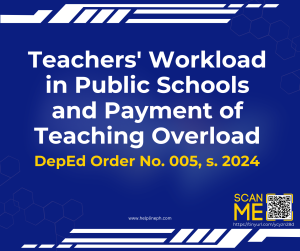
Teachers’ Workload in Public Schools and Payment of Teaching Overload
Teachers not required to report to school when classes are suspended, stay in touch.
Unlock Your Potential: Subscribe Now for More FREE Training with CPD Units!
© 2024 HelplinePH. All Rights Reserved.
Home — Essay Samples — Education — Homework — The Benefits and Drawbacks of the No Homework Policy
The Benefits and Drawbacks of The No Homework Policy
- Categories: Homework
About this sample

Words: 476 |
Published: Sep 7, 2023
Words: 476 | Page: 1 | 3 min read

Cite this Essay
Let us write you an essay from scratch
- 450+ experts on 30 subjects ready to help
- Custom essay delivered in as few as 3 hours
Get high-quality help

Dr. Heisenberg
Verified writer
- Expert in: Education

+ 120 experts online
By clicking “Check Writers’ Offers”, you agree to our terms of service and privacy policy . We’ll occasionally send you promo and account related email
No need to pay just yet!
Related Essays
2 pages / 1021 words
1 pages / 591 words
3 pages / 1225 words
5 pages / 2414 words
Remember! This is just a sample.
You can get your custom paper by one of our expert writers.
121 writers online
Still can’t find what you need?
Browse our vast selection of original essay samples, each expertly formatted and styled
Related Essays on Homework
Homework has been a longstanding tradition in education, serving as a tool for reinforcing classroom learning, developing study habits, and promoting independent thinking. However, it has also been a subject of debate, with [...]
Homework has long been a controversial topic in education, with some arguing that it is essential for reinforcing learning and developing crucial skills, while others believe it can be detrimental to students' well-being and [...]
In conclusion, there are compelling reasons why homework should be banned. Its negative impact on students' mental health, lack of evidence supporting its benefits, and potential for alternative approaches to promote learning [...]
Homework has long been a contentious topic in education, with opinions divided on its benefits and drawbacks. While some argue that homework is a necessary tool for reinforcing classroom learning and promoting academic success, [...]
Every school in the world at one point has given their students homework on weekends and holiday breaks, and that isn’t fair to the students. Every year students must go to school 10 out of the 12 months in a year. Every week [...]
Do students of secondary school in Kazakhstan really have strong reasons for not doing homework given at school?Homework is studying that students do at home to prepare for school. It is considered as a tool of reinforcing the [...]
Related Topics
By clicking “Send”, you agree to our Terms of service and Privacy statement . We will occasionally send you account related emails.
Where do you want us to send this sample?
By clicking “Continue”, you agree to our terms of service and privacy policy.
Be careful. This essay is not unique
This essay was donated by a student and is likely to have been used and submitted before
Download this Sample
Free samples may contain mistakes and not unique parts
Sorry, we could not paraphrase this essay. Our professional writers can rewrite it and get you a unique paper.
Please check your inbox.
We can write you a custom essay that will follow your exact instructions and meet the deadlines. Let's fix your grades together!
Get Your Personalized Essay in 3 Hours or Less!
We use cookies to personalyze your web-site experience. By continuing we’ll assume you board with our cookie policy .
- Instructions Followed To The Letter
- Deadlines Met At Every Stage
- Unique And Plagiarism Free

The Trailblazer
The “no homework” policy is not real: an editorial.

This year, the school has implemented a new policy called the “No Homework Weekend.” This means that every long weekend, students should not be assigned homework from their classes that will be due the day they come back.
The policy was implemented in an effort to aid the amount of homework students receive. According to a survey taken last school year, students claimed that the workload they receive from classes is way too much. This makes it stressful for students to keep up with assignments, so the school believed that this policy would help resolve the issue.
However, regardless of this being the case, the policy is not being utilized and many students are still being assigned homework over long weekends. Many teachers for classes such as OnRamps and AP do not follow this policy because they claim that it does not apply to college-level classes. In reality, the policy applies to every class whether it be college-level or not. Teachers have been getting in trouble for not following it.
A benefit that students would gain if teachers followed the policy would be that it would allow them to relax, spend time with family and friends and go over topics they learned in classes. Above all, one major benefit they would gain is getting more sleep.
Sleep is the number one priority for a student to stay motivated and do well in school, so they will be able to catch up on sleep they missed throughout the week. It will also help them think clearly and improve their physical and mental health.
In conclusion, although the “No Homework” policy is not being followed properly, it should be followed in order to make students’ lives easy-going, balanced and most importantly, less stressful.
Your donation will support the student journalists of McNeil High School. Your contribution will allow us to purchase equipment and cover our annual website hosting costs.

The student news site of McNeil High School
Comments (0)
Cancel reply
Your email address will not be published. Required fields are marked *
- Toggle Accessibility Statement
- Skip to Main Content
Statement on the no-homework policy bills
PASIG CITY, August 28, 2019 – With its issuance of the “Guidelines on Giving Homework or Assignment to All Public Elementary School Pupils,” otherwise known as DepEd Memorandum No. 392, series 2010, the Department of Education (DepEd) reiterates its commitment to the holistic development of learners inside and outside the classroom.
The said issuance aims to enable learners to have more quality time with their parents, family, and friends by limiting the homework/assignment to a reasonable quantity on school days and by eliminating the same during weekends.
It is in this regard that the Department supports the no-homework policy proposed by legislators from the House of Representatives. By ensuring that they complete all assignments and projects in school, the no-homework policy enables our learners to find balance between their academic development and personal growth by having ample time for enjoyable activities with family.
The Department will further study the other provisions of the bills to determine the repercussions on the current teaching and learning process.

New California bill pushes for schools to give less homework
S AN FRANCISCO (KRON) — How much homework is too much homework? A new California bill introduced in the State Assembly asserts that giving elementary school students hefty amounts of homework does not result in higher academic achievement.
Assemblywoman Pilar Schiavo presented the the Healthy Homework Act, AB 2999, in the Assembly Education Committee on Wednesday. The legislation is aimed at developing updated homework guidelines across California school districts. It would mandate school boards to establish homework policies that support and consider impacts to students’ mental and physical health.
Assemblywoman Schiavo said, “As a single parent, I know how stressful homework time can be for our kids and the entire family. The Healthy Homework Act is about ensuring that our homework policies are healthy for our kids, address the needs of the whole child, and also support family time, time to explore other extra-curricular interests, and give students and families time to connect and recover from the day.”
The assemblywoman’s office said research studies found:
- For elementary school pupils, there was no correlation between the amount of time spent on homework and achievement. Students who completed more homework were no more likely than their peers to earn higher grades and scores in school.
- For middle and high school students, research found an increase in academic performance when middle schoolers did up to one hour of homework, and high schoolers did up to two hours daily. These effects began to fade as students did more than two hours of work, and more time spent on homework did not necessarily equate to higher academic achievement.
Research findings in AB 2999 state, “The quality of homework assignments is more important than the quantity of work assigned, and that when pupils find homework interesting, relevant, and valuable, they are more likely to complete it.”
AB 2999 encourages school districts to enact policies that are developmentally appropriate based on grade level, and consider if homework should be optional or not graded in order to reduce pressure.
Schiavo said, “We know homework is a top three stressor in kids’ overall lives. We are in the middle of a student mental health crisis. It’s critical we incorporate homework practices into this discussion to relieve student stress, especially with something we could profoundly impact almost overnight.”
Schiavo announced the bill during a news conference held outside the Capitol Building with teachers on Wednesday. Teacher Casey Cuny, who was named 2023 California Teacher of The Year, said, “This bill will create the space for districts and teachers to have intentional conversations about best practices for homework.”
For the latest news, weather, sports, and streaming video, head to KRON4.

Homework Ban
- X (formerly Twitter)
NAT: Hey, Nat here, let's see what's making news. Poland has just banned homework. Yes, that's right no homework ever. For lower primary students anyway. Here's Wren.
DAKOTA: Are you thinking what I'm thinking?
JACK: Yeah. Let's move to Poland.
DAKOTA: No, let's make a mind control device so we can make the Prime Minister ban homework in Australia.
JACK: Okay.
Yep, over here in Poland, kids are here living the dream. Homework is now banned for students in years 1 to 3 and for students in years 4 to 8, it's optional and won't count towards grades.
OLA: I am happy because this homework, I did not like it too much and it didn't really make much sense because most people in my class, in the morning would copy it from someone who has done the homework.
JUILAN: It's a little bit uncool that there is no more homework. But when there is no homework, that's also rather cool.
The Polish government decided to make the big move. After a moment that went viral at a campaign rally in the lead up to the parliamentary elections were a 14-year-old decided to make a stand for all Polish kids.
MACIEK, PRIMARY SCHOOL STUDENT: This is a general problem of Polish schools that children's rights are being violated. For example, the right to take some rest. There is homework to be done during weekends, tests on Mondays, and so much homework is given us that we find no time for rest.
A lot of people agreed with Maciek. Before the ban, Polish kids spent around 1.7 hours per day on homework, which is more than a lot of other countries, and some experts questioned whether or not it was doing any good.
BARBARA NOWACKA, POLISH EDUCATION MINISTER: When I read research regarding the mental health of children, their overload with learning, the reasons of depression, of tensions, stress, or loss of interest in learning, one of the factors, the one that could be removed fastest, was the burden of homework.
Some studies have shown that while homework can be handy for high school students in primary school it doesn't necessarily help you learn and it takes up time that could be better spent doing things like hanging out with friends, playing sport, or doing other creative stuff.
STUDENT: I don't mind it but I still feel like it's a waste of time.
STUDENT: Because you could do everything else? Like you could do exercise? You could, like, play games.
On the flipside, fans of homework say, it can be a good way of making sure all the stuff you've learnt at school sticks in your head, and getting your parents involved in your learning. It can also teach you how to work independently, and to help you get ready for high school and university.
STUDENT: You can research more, and you have more time to catch up.
STUDENT: My grades have gone up a lot because of doing homework.
Some parents and teachers in Poland aren't on board with the ban, which they say happened too quickly and without enough consultation. So, could something like this happen here? Well, right now it's not on the cards and it's up to schools to decide their own homework policies. Unless of course…
DAKOTA: Three, two, one. JACK: Did it work? DAKOTA: Probably not.
Recently the Polish government decided to ban homework in lower primary and make it optional in upper primary. It’s a move that’s been welcomed by many kids although not all adults think it’s a good idea. We find out more about the debate over homework and whether or not it helps kids to learn.
- Justina Ward, Reporter
BTN Classroom Episode 10, 2024
In this episode
Kokoda Track
China Athlete Doping Claims
Should Homework Be Banned?
Homework Debate
Should Homework be banned? Newsround
Annual skilled trades competition builds technical and professional skills for Iowa students
- Wednesday, May 1, 2024
- Headline Story

Southeast Polk senior Simon Frohock (R) competed in the cabinet making contest for a second year.
High-quality career and professional skill development took center stage last week as over 600 high school and college students took part in the annual SkillsUSA State Leadership and Skills Conference . Held in Ankeny at the Des Moines Area Community College campus, this two-day competition featured over 50 different leadership and technical competitions for students to test their technical skills and knowledge, explore career pathways and make valuable connections with local industry leaders.

Southeast Polk High School seniors Delvis Kouete and Simon Frohock, both 17, were well-prepared for the competition, which featured timed activities related to industrial technology, carpentry, robotics, automotive repair and job interview techniques, among many others. For this year’s skills competition, Delvis competed in architectural drafting and was a member of the school’s quiz bowl team. Simon, the 2023 state champion in cabinet making, returned for a second year in the cabinet making contest. Both students competed well in their individual competitions, with Delvis placing fifth and Simon serving as this year’s runner-up.
“The skills competition can help you strive for excellence in your work and learning,” Simon said. “Even though it’s a competition and there is pressure to do well, it’s a good, low-risk way to see what an employee in this work has to do every day.”
Both Simon and Delvis noted that the competition not only helps to strengthen a student’s technical skills, but it also engages students in career pathway discovery and professional skill development.
“Being a part of SkillsUSA and competing in the skills competition has helped me learn new skills with my hands and work on teamwork, communication and leadership skills,” Delvis said. “You learn how to work with other people that aren’t like you and get your mind thinking about your future career.”
Along with the individual contests, all competitors at the SkillsUSA State Leadership and Skills Conference were required to submit a resume and take a professional development test that focused on workplace, professional and technical skills as well as overall knowledge of SkillsUSA.
“SkillsUSA helps provide real-world context to the content being taught by classroom educators,” said Kent Storm, state director for SkillsUSA Iowa. “Taking the learning beyond the classroom allows students to grow and learn next to industry partners and gain valuable experience."
As one of Iowa’s career and technical student organizations (CTSO) , SkillsUSA champions the skilled trades industry and provides opportunities for students to apply the skills they have developed in classrooms through conferences, competitions, community service events, worksite visits and other activities.
“Participation in a CTSO like SkillsUSA helps students gain hands-on experience and connect classroom curricula to careers,” said Cale Hutchings, education consultant at the Iowa Department of Education. “Through CTSOs, students can become leaders and strengthen their employability skills, which is valuable as they explore potential next steps in their college and career pathways.”
SkillsUSA boasts a roster of over 400,000 members nationwide. In Iowa, over 1,300 students and advisers in career and technical education programs participate in local SkillsUSA chapters.
At Southeast Polk, 21 student members are a part of their SkillsUSA chapter. Led by industrial technology teachers and chapter advisers Ryan Andersen and Brett Rickabaugh, the students have been involved with several community service projects, employer presentations and opportunities to work closely with instructors.
“Any time a student participates in SkillsUSA, it gives us more time with that student to elaborate on what we’ve learned in class,” Andersen said. “They can connect the idea to the planning, design and completion of a project and how that activity fits into a real career. That’s something we can’t replicate without a CTSO.”
Anderson also stated that students who participate in SkillsUSA and activities like the State Leadership and Skills Conference build confidence through their experiences.
“It really helps students to have the confidence to rely on their skills and what they know,” he said. “The skills competition requires them to use problem-solving skills and build off their knowledge to continue to learn and persevere.”
This year’s first-place winners at the SkillsUSA State Leadership and Skills Conference will move onward to compete with 6,000 other students at the national conference in Atlanta this June.

For Simon and Delvis, the skills competition was another step in building necessary skills and acumen for their futures. Simon, with his penchant for cabinet making, already has a full-time job lined up after graduation with a local cabinet shop. Additionally, Delvis would like to pursue something within the computer science field, perhaps in the coding or software engineering areas, and although he is changing fields, he believes SkillsUSA has helped him feel more prepared for the future.
“It has definitely helped me with skill-building and problem-solving,” he said. “What I’ve learned will be beneficial no matter what I decide to do next.”
- Share full article
Advertisement
Supported by
Guest Essay
Justin Trudeau Is No Match for a Polarized World

By Stephen Marche
Mr. Marche is the author, most recently, of “The Next Civil War.”
Political careers often end in failure — a cliché that exists because it too often happens to be true. Justin Trudeau, one of the world’s great progressive leaders, may be heading toward that moment. In a recent interview he acknowledged that every day he considers leaving his “crazy job” as Canada’s prime minister. Increasingly, the question is not if he will leave but how soon and how deep his failure will be when he goes.
At stake is something that matters more than one politician’s career: Canada’s contemporary liberal and multicultural society, which just happens to be the legacy of the prime minister’s father and predecessor, Pierre Trudeau. When you fly into Montreal, you land in Trudeau airport, and that’s because of Pierre, not Justin.
The threat to that liberal tradition is not all Justin Trudeau’s fault, of course. The right-wing tide overwhelming global politics has come late but with pent-up vigor to Canada. For several years now, polls have shown Mr. Trudeau’s Liberals at lows from which no Canadian political party has ever recovered in elections. In a recent by-election, in a key suburban district of the Greater Toronto Area, the Conservative Party beat the Liberals by a lopsided 57 percent to 22 percent, a swing of nine percentage points to the Conservatives.
But polls and by-elections can be poor predictors of election viability. A better indicator is the flummoxed figure of Mr. Trudeau himself, who seems increasingly out of touch in the new world of division and extremism.
Part of Mr. Trudeau’s problem is simple exhaustion, both his own and Canadian voters’. He has been in government for almost eight and a half years. During that time, he has been one of the most effective progressive leaders in the world. His government cut Canada’s child poverty in half. He legalized marijuana, ending roughly 100 years of nonsense. He made large strides in reconciliation with Indigenous Canadians. He renegotiated NAFTA with a lunatic American president. He handled Covid better than most. You don’t have to squint too hard to recognize that he is one of the most competent and transformative prime ministers this country has ever produced.
But an era has passed since the start of that halcyon time, when Mr. Trudeau stood in front of his first cabinet and, when asked why it was half female, answered, “Because it’s 2015.” Now a new generation has emerged, for which the liberal technocratic order his government represents has failed to offer a path to a stable, prosperous future and the identity politics he once embodied have withered into vacuous schism. The growing anti-Liberal Party sentiment of young people is the biggest threat to his electability.
His opponents are well aware of Mr. Trudeau’s unpopularity with young voters and have focused Conservative attacks on an issue especially important to that cohort: the housing crisis. The soaring real estate market, in which tiny homes in Toronto and Vancouver now regularly cost more than properties in Paris or New York, has been exacerbated by the Trudeau government bringing in over a million immigrants last year without having built the necessary infrastructure to support the communities receiving them.
For decades, Canada has been the only country in the world where the more patriotic citizens are, the more they support immigration. Liberal mishandling of immigration’s impact may well end this blessed state. The housing crisis is the epitome of Mr. Trudeau’s failure: It feels good — it feels righteous — to support immigration. Isn’t that the whole idea behind multiculturalism? But without the proper hardheadedness, without being frank about difficult realities, righteousness quickly sours.
The first evidence of the prime minister’s weakness in the face of Canada’s growing polarization was the government response to the so-called Freedom Convoy in 2022, in which anti-vaccine demonstrators held Ottawa hostage for a month. His government decided to take a bureaucratic approach to the disruption, dithering while the truckers entrenched themselves in the city, then using the Emergencies Act to seize several of their bank accounts. A January federal decision found that Mr. Trudeau’s invocation of the act was “not justified.”
Other countries took much simpler approaches to their civil unrest in the aftermath of Covid restrictions. The French used tear gas. The moment a convoy set out from Los Angeles headed for Washington, in imitation of the Canadian convoy, the Biden administration called out the National Guard. Other countries know: There is a time for brute force.
The same fear of confrontation — which, to be fair to Mr. Trudeau, afflicts the entirety of Canadian culture and politics — motivated new online harms legislation, which he proposed in February in an attempt to regulate or at least somewhat contain the internet and social media, from revenge pornography and child sexual abuse material to hate speech. It is, unfortunately, an absurd document that seeks to impose virtue by fiat.
The maximum penalty for promoting genocide — a form of speech crime — is life imprisonment, meaning harsh punishments can be meted out for the vaguest and most subjective of definitions. Equally troubling is the measure that if a Canadian citizen “fears on reasonable grounds” that a hate crime will be committed, the individual can apply for an order that another person be subjected to court-mandated conditions on what that person may say.
No less a figure than Margaret Atwood described the proposed law as “Orwellian.” “It’s Lettres de Cachet all over again,” she wrote on X , referring to the king’s ability in prerevolutionary France to imprison without trial. The spirit behind the new law is the very worst of Canada: Be nice, or else. And it will do nothing to contain the disinformation wave that’s swelling.
But more than any other event, it is the Oct. 7 attack on Israel by Hamas that has exposed Mr. Trudeau’s inability to fight for liberal values. Since that day, the Canadian Jewish community has been subject to violence not seen since the 1930s. A synagogue has been firebombed , a Jewish school shot at , a Jewish hospital targeted by an antisemitic mob, a Jewish-owned bookstore vandalized , a Jewish neighborhood disrupted , a Jewish grocery store lit on fire . A mob outside a Holocaust Museum in Montreal chanted , “Death to the Jews.” Mr. Trudeau’s response has been pleas for everyone to just get along. “This needs to stop,” he said , referring to the lobbing of a Molotov cocktail at a synagogue. “This is not who we are as Canadians.”
This litany of failures is all the more significant because of Mr. Trudeau’s name. At a moment of crisis for Canadian multiculturalism, he makes a poor contrast with his father. Pierre Trudeau was not just another Canadian politician; he passed the Charter of Rights and Freedoms while establishing Canada’s Constitution as its own and not subject to the British Parliament. He made no-fault divorce and homosexuality legal. He instituted the official policy of multiculturalism, which made it a matter of law that Canadian citizens were encouraged to practice their religions and maintain their identities.
Pierre Trudeau might have been the most important architect of the liberal Canada, but he was also tough as hell. He famously invoked the War Measures Act against separatist terrorists in 1970, suspending civil liberties and bringing in the military. When asked by journalists how far he was willing to go, he said, “Just watch me.” Pierre Trudeau knew that the liberal order demands forceful and practical — and occasionally ugly — defense.
His son now seems to believe that telling people to be nice to one another will do. This weakness not only threatens the multicultural society his father founded; it threatens progressive values around the world. For many, Canada seemed a lone candle alight for the values of pluralism and liberalism as they have been extinguished elsewhere in the world.
Justin Trudeau does not have to call an election until 2025. He won elections against the odds before. But time is not on his side. It’s not Pierre Trudeau’s world anymore. It doesn’t much look like Justin Trudeau’s, either.
Stephen Marche is the author, most recently, of “The Next Civil War.”
The Times is committed to publishing a diversity of letters to the editor. We’d like to hear what you think about this or any of our articles. Here are some tips . And here’s our email: [email protected] .
Follow the New York Times Opinion section on Facebook , Instagram , TikTok , WhatsApp , X and Threads .
An earlier version of this article misstated the name of an act that Pierre Trudeau invoked in 1970. It is the War Measures Act, not the Emergency War Measures Act.
How we handle corrections

An official website of the United States government
Here’s how you know
Official websites use .gov A .gov website belongs to an official government organization in the United States.
Secure .gov websites use HTTPS A lock ( Lock A locked padlock ) or https:// means you’ve safely connected to the .gov website. Share sensitive information only on official, secure websites.
USDA Announces May 2024 Lending Rates for Agricultural Producers
WASHINGTON, May 1, 2024 – The U.S. Department of Agriculture (USDA) announced loan interest rates for May 2024, which are effective May 1, 2024. USDA Farm Service Agency (FSA) loans provide important access to capital to help agricultural producers start or expand their farming operation, purchase equipment and storage structures or meet cash flow needs.
“I encourage our lenders and borrowers alike to work with our local offices and our cooperators to capitalize fully on the existing flexibilities in these important programs,” said FSA Administrator Zach Ducheneaux.
Operating, Ownership and Emergency Loans FSA offers farm ownership, operating and emergency loans with favorable interest rates and terms to help eligible agricultural producers, whether multi-generational, long-time, or new to the industry, obtain financing needed to start, expand or maintain a family agricultural operation. For many loan options, FSA sets aside funding for underserved producers, including, beginning, women, American Indian or Alaskan Native, Asian, Black or African American, Native Hawaiian or Pacific Islander, and Hispanic farmers and ranchers.
Interest rates for Operating and Ownership loans for May 2024 are as follows:
- Farm Operating Loans (Direct): 5.250%
- Farm Ownership Loans (Direct): 5.500%
- Farm Ownership Loans (Direct, Joint Financing): 3.500%
- Farm Ownership Loans (Down Payment): 1.500%
- Emergency Loan (Amount of Actual Loss): 3.750%
FSA also offers guaranteed loans through commercial lenders at rates set by those lenders.
To access an interactive online, step-by-step guide through the farm loan process, visit the Loan Assistance Tool on farmers.gov.
Commodity and Storage Facility Loans Additionally, FSA provides low-interest financing to producers to build or upgrade on-farm storage facilities and purchase handling equipment and loans that provide interim financing to help producers meet cash flow needs without having to sell their commodities when market prices are low. Funds for these loans are provided through the Commodity Credit Corporation (CCC) and are administered by FSA.
- Commodity Loans (less than one year disbursed): 6.125%.
- Three-year loan terms: 4.625%
- Five-year loan terms: 4.375%
- Seven-year loan terms: 4.375%
- Ten-year loan terms: 4.375%
- Twelve-year loan terms: 4.500%
- Sugar Storage Facility Loans (15 years): 4.625%
Farm Loan Program Process Improvement FSA has a significant initiative underway to streamline and automate the Farm Loan Program customer-facing business process. For the over 26,000 producers who submit a direct loan application annually, FSA has made various improvements, including:
- The Online Loan Application , an interactive, guided application that is paperless and provides helpful features, including an electronic signature option, the ability to attach supporting documents, such as tax returns, complete a balance sheet and build a farm operating plan.
- The Loan Assistance Tool that provides customers with an interactive online, step-by-step guide to identifying the direct loan products that may be a fit for their business needs and to understanding the application process.
- An online direct loan repayment feature that relieves borrowers from the necessity of calling, mailing, or visiting a local Service Center to pay a loan installment.
- A simplified direct loan paper application , reduced from 29 pages to 13 pages.
To learn more about FSA programs, producers can contact their local USDA Service Center. Producers can also prepare maps for acreage reporting as well as manage farm loans and view other farm records data and customer information by logging into their farmers.gov account. If you don’t have an account, sign up today.
USDA touches the lives of all Americans each day in so many positive ways. Under the Biden-Harris administration, USDA is transforming America’s food system with a greater focus on more resilient local and regional food production, fairer markets for all producers, ensuring access to safe, healthy and nutritious food in all communities, building new markets and streams of income for farmers and producers using climate smart food and forestry practices, making historic investments in infrastructure and clean energy capabilities in rural America, and committing to equity across the Department by removing systemic barriers and building a workforce more representative of America. To learn more, visit usda.gov .
USDA is an equal opportunity provider, employer and lender.
Placeholder
Recent news, usda announces 2024 wool and mohair marketing assistance loan rates.
WASHINGTON, Dec. 27, 2023 – The U.S. Department of Agriculture (USDA) Commodity Credit Corporation today announced Marketing Assistance Loan rates for 2024-crop graded wool by micron class. Loan rates for ungraded wool and mohair are unchanged and remained the same from the prior crop year.
USDA Appoints New Members to the Federal Advisory Committee for Urban Agriculture and Innovative Production
Agriculture risk coverage and price loss coverage programs receive 2018 farm bill one year extension, farmers can now enroll for the 2024 crop year.

IMAGES
COMMENTS
Examining these arguments offers important perspectives on the wider educational and developmental consequences of homework practices. 1. Elevated Stress and Health Consequences. According to Gitnux, U.S. high school students who have over 20 hours of homework per week are 27% more likely to encounter health issues.
Missing from the homework conversation is how no-homework policies benefit the whole family - parents and caregivers included. School schedules and cultures were created for a different time ...
Catchings, who also taught third to 12th graders for 12 years, says she's seen the positive effects of a no homework policy while working with students abroad.
The teacher decides the amount of homework to be given and should do so based on the classroom's and school's needs. After all, all schools are different because no one school serves the same ...
The authors believe this meritocratic narrative is a myth and that homework — math homework in particular — further entrenches the myth in the minds of teachers and their students.
A 2006 study found that "homework had no association with achievement gains" when measured by standardized tests results or grades. ... Push for the position and policies you support by writing US national senators and representatives. Sources. 1. Tom Loveless, "Homework in America: Part II of the 2014 Brown Center Report of American ...
The Argument for No Homework Policies. The most common argument made for no-homework policies is that homework does not improve academic achievement. A Duke University meta-analysis of homework ...
The homework wars are back. By Jacob Sweet Updated Feb 23, 2023, 6:04am EST. As the Covid-19 pandemic began and students logged into their remote classrooms, all work, in effect, became homework ...
The so-called "no homework" movement is focused on elementary grades, but framing the choice as "no homework vs. homework" is misguided, according to Maurice Elias of Rutgers University and co-author of Emotionally Intelligent Parenting and The Joys and Oys of Parenting. "Ideally, we want children to understand that they are always learners.
No Homework Policy Orchard School Homework Information Student's Daily Home Assignment 1. Read just-right books every night — (and have your parents read to you too) . 2.
Too much, however, is harmful. And homework has a greater positive effect on students in secondary school (grades 7-12) than those in elementary. "Every child should be doing homework, but the ...
Responses indicating no homework on the "usual" question in 2004 were: 2% for age 9-year-olds, 5% for 13 year olds, and 12% for 17-year-olds. These figures are much less than the ones reported ...
A 'no homework' policy may pose a limitation to alternative homework activities in the case a child doesn't have parent guidance at home, or the financial means to engage in some of the activities ...
According to Alfie Kohn for Scholastic, these include the fact that there is no evidence to show that homework benefits elementary students. In high schools, some studies find a relationship between homework and test scores, but the deviation is small. Proponents of no-homework policies argue that students are overworked and that homework is ...
August 2017. Following an established REL Northeast & Islands research protocol, we conducted a search for recent research on homework policies and practices. We focused on identifying resources that specifically addressed research on policies and practices for homework for various grade levels based on its impact on student achievement.
Kohn points to the lack of evidence that homework is an effective learning tool; in fact, he calls it "the greatest single extinguisher of children's curiosity that we have yet invented." Homework Bans. Last year, the public schools in Marion County, Florida, decided on a no-homework policy for all of their elementary students.
Homework Policy. We strongly believe in the power of play and the importance of letting children be children. Further, research does not indicate significant benefits of homework at the elementary level. We believe that when students give us all of their day, they deserve to have all of their night.
Over time, we've come to the opinion that there are four overarching concepts that need to be considered when setting homework. We call these the "four planks" of an effective homework policy, and below we've outlined each one, why it's important, and how you can take it into account when planning homework. Access.
While homework provides opportunities for reinforcement, time management, and parental involvement, no homework policies promote quality classroom instruction, leisure, and individualized learning. The key lies in striking a balance that aligns with each student's needs and learning style. Regardless of the approach adopted, a supportive and ...
The Impact on Family Time. One of the significant benefits of the No Homework Policy is the potential for increased family time. With less homework to complete, students have more time to spend with their families, engage in hobbies, and simply relax and recharge. This can lead to improved mental health and overall well-being for students.
One of the main arguments is that excessive homework can lead to stress, burnout, and a lack of work-life balance for students. Young learners often have a multitude of responsibilities, including extracurricular activities and family commitments. Excessive homework can rob them of valuable free time, causing fatigue and hindering their ability ...
Trailblazer Staff • October 11, 2023. Photo courtesy of UC San Diego. This year, the school has implemented a new policy called the "No Homework Weekend.". This means that every long weekend, students should not be assigned homework from their classes that will be due the day they come back. The policy was implemented in an effort to aid ...
PASIG CITY, August 28, 2019 - With its issuance of the "Guidelines on Giving Homework or Assignment to All Public Elementary School Pupils," otherwise known as DepEd Memorandum No. 392, series 2010, the Department of Education (DepEd) reiterates its commitment to the holistic development of learners inside and outside the classroom. The ...
The Healthy Homework Act is about ensuring that our homework policies are healthy for our kids, address the needs of the whole child, and also support family time, time to explore other extra ...
Space to play or pause, M to mute, left and right arrows to seek, up and down arrows for volume. NAT: Hey, Nat here, let's see what's making news. Poland has just banned homework. Yes, that's ...
In addition to Louisiana, where the policy remains in place for this year's graduating class, at least six other states have a requirement tied to graduation: Illinois, Alabama, Texas ...
High-quality career and professional skill development took center stage last week as over 600 high school and college students took part in the annual SkillsUSA State Leadership and Skills Conference.Held in Ankeny at the Des Moines Area Community College campus, this two-day competition featured over 50 different leadership and technical competitions for students to test their technical ...
Mr. Marche is the author, most recently, of "The Next Civil War." Political careers often end in failure — a cliché that exists because it too often happens to be true. Justin Trudeau, one ...
Visit the related program webpages for more information. To learn more about FSA programs, producers can contact their local USDA Service Center. Producers can also prepare maps for acreage reporting as well as manage farm loans and view other farm records data and customer information by logging into their farmers.gov account. If you don't ...
California State Assemblymember Pilar Schiavo introduced the Healthy Homework Act (AB 2999) to "make homework more supportive and less stressful." The Healthy Homework Act (AB 2999) Advances! With local control and input from teachers, students, and parents, #AB2999 aims to create supportive, equitable homework policies for our kids ...